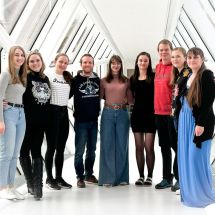stdClass Object
(
[nazev] => Department of Biochemistry and Microbiology UCT Prague
[adresa_url] =>
[api_hash] =>
[seo_desc] =>
[jazyk] => en
[jednojazycny] =>
[barva] =>
[indexace] => 1
[obrazek] =>
[ga_force] =>
[cookie_force] =>
[secureredirect] =>
[google_verification] =>
[ga_account] =>
[ga_domain] =>
[ga4_account] => G-VKDBFLKL51
[gtm_id] =>
[gt_code] =>
[kontrola_pred] =>
[omezeni] =>
[pozadi1] => 883MLsrPT8rMz8lPz0wFAA.jpg
[pozadi2] =>
[pozadi3] =>
[pozadi4] =>
[pozadi5] =>
[robots] =>
[htmlheaders] =>
[newurl_domain] => 'biomikro.vscht.cz'
[newurl_jazyk] => 'en'
[newurl_akce] => '[en]'
[newurl_iduzel] =>
[newurl_path] => 8548/29628/29630
[newurl_path_link] => Odkaz na newurlCMS
[iduzel] => 29630
[platne_od] => 31.10.2023 17:01:00
[zmeneno_cas] => 31.10.2023 17:01:47.208229
[zmeneno_uzivatel_jmeno] => Jan Kříž
[canonical_url] =>
[idvazba] => 37731
[cms_time] => 1752882119
[skupina_www] => Array
(
)
[slovnik] => stdClass Object
(
[logo_href] => /
[logo] =>  [logo_mobile_href] =>
[logo_mobile] =>
[logo_mobile_href] =>
[logo_mobile] =>  [google_search] =>
[social_fb_odkaz] =>
[social_tw_odkaz] =>
[social_yt_odkaz] =>
[intranet_odkaz] => https://intranet.vscht.cz/?jazyk=en
[intranet_text] => Intranet
[mobile_over_nadpis_menu] => Menu
[mobile_over_nadpis_search] => Search
[mobile_over_nadpis_jazyky] => Languages
[mobile_over_nadpis_login] => Login
[menu_home] => Home page
[paticka_mapa_odkaz] =>
[paticka_budova_a_nadpis] => BUILDING A
[paticka_budova_a_popis] => Rektorát, oddělení komunikace, pedagogické oddělení, děkanát FCHT, centrum informačních služeb
[paticka_budova_b_nadpis] => BUILDING B
[paticka_budova_b_popis] => Věda a výzkum, děkanát FTOP, děkanát FPBT, děkanát FCHI, výpočetní centrum, zahraniční oddělení, kvestor
[paticka_budova_c_nadpis] => BUILDING C
[paticka_budova_c_popis] => Dětský koutek Zkumavka, praktický lékař, katedra ekonomiky a managementu, ústav matematiky
[paticka_budova_1_nadpis] => NÁRODNÍ TECHNICKÁ KNIHOVNA
[paticka_budova_1_popis] =>
[paticka_budova_2_nadpis] => STUDENTSKÁ KAVÁRNA
[paticka_budova_2_popis] =>
[paticka_adresa] => VŠCHT Praha
[google_search] =>
[social_fb_odkaz] =>
[social_tw_odkaz] =>
[social_yt_odkaz] =>
[intranet_odkaz] => https://intranet.vscht.cz/?jazyk=en
[intranet_text] => Intranet
[mobile_over_nadpis_menu] => Menu
[mobile_over_nadpis_search] => Search
[mobile_over_nadpis_jazyky] => Languages
[mobile_over_nadpis_login] => Login
[menu_home] => Home page
[paticka_mapa_odkaz] =>
[paticka_budova_a_nadpis] => BUILDING A
[paticka_budova_a_popis] => Rektorát, oddělení komunikace, pedagogické oddělení, děkanát FCHT, centrum informačních služeb
[paticka_budova_b_nadpis] => BUILDING B
[paticka_budova_b_popis] => Věda a výzkum, děkanát FTOP, děkanát FPBT, děkanát FCHI, výpočetní centrum, zahraniční oddělení, kvestor
[paticka_budova_c_nadpis] => BUILDING C
[paticka_budova_c_popis] => Dětský koutek Zkumavka, praktický lékař, katedra ekonomiky a managementu, ústav matematiky
[paticka_budova_1_nadpis] => NÁRODNÍ TECHNICKÁ KNIHOVNA
[paticka_budova_1_popis] =>
[paticka_budova_2_nadpis] => STUDENTSKÁ KAVÁRNA
[paticka_budova_2_popis] =>
[paticka_adresa] => VŠCHT Praha
Technická 5
[paticka_odkaz_mail] => mailto:Tereza.Kobzova@vscht.cz
[zobraz_desktop_verzi] =>
[social_fb_title] =>
[social_tw_title] =>
[social_yt_title] =>
[aktualizovano] => Updated
[autor] => Author
[drobecky] => You are here: UCT Prague - FFBT – Department of Biochemistry and Microbiology
[preloader] => Loading...
[zobraz_mobilni_verzi] =>
[nepodporovany_prohlizec] =>
[social_in_odkaz] =>
[den_kratky_1] =>
[archiv_novinek] =>
[novinky_servis_archiv_rok] =>
[novinky_kategorie_1] =>
[novinky_kategorie_2] =>
[novinky_kategorie_3] =>
[novinky_kategorie_4] =>
[novinky_kategorie_5] =>
[novinky_archiv_url] =>
[novinky_servis_nadpis] =>
[novinky_dalsi] =>
[den_kratky_2] =>
[social_li_odkaz] =>
[den_kratky_3] =>
[more_info] =>
)
[poduzel] => stdClass Object
(
[29706] => stdClass Object
(
[obsah] =>
[poduzel] => stdClass Object
(
[29711] => stdClass Object
(
[obsah] =>
[iduzel] => 29711
[canonical_url] => //biomikro.vscht.cz
[skupina_www] => Array
(
)
[url] =>
[sablona] => stdClass Object
(
[class] =>
[html] =>
[css] =>
[js] =>
[autonomni] =>
)
)
[29713] => stdClass Object
(
[obsah] =>
[iduzel] => 29713
[canonical_url] => //biomikro.vscht.cz
[skupina_www] => Array
(
)
[url] =>
[sablona] => stdClass Object
(
[class] =>
[html] =>
[css] =>
[js] =>
[autonomni] =>
)
)
[29712] => stdClass Object
(
[obsah] =>
[iduzel] => 29712
[canonical_url] => //biomikro.vscht.cz
[skupina_www] => Array
(
)
[url] =>
[sablona] => stdClass Object
(
[class] =>
[html] =>
[css] =>
[js] =>
[autonomni] =>
)
)
)
[iduzel] => 29706
[canonical_url] =>
[skupina_www] => Array
(
)
[url] =>
[sablona] => stdClass Object
(
[class] =>
[html] =>
[css] =>
[js] =>
[autonomni] =>
)
)
[29707] => stdClass Object
(
[obsah] =>
[poduzel] => stdClass Object
(
[29726] => stdClass Object
(
[nazev] => About Department of Biochemistry and Microbiology
[seo_title] => About Department of Biochemistry and Microbiology
[seo_desc] =>
[autor] =>
[autor_email] =>
[obsah] => Department of Biochemistry and Microbiology is dedicated to higher learning and research in the fields of biology, biochemistry, microbiology and molecular biology. We organise courses in core biochemical disciplines for the Faculty of Food and Biochemical Technology in Bachelor and Master programme. Other specialized courses are offered for Master and postgraduate students. Student in all stages of higher learning are actively participating in our research projects.
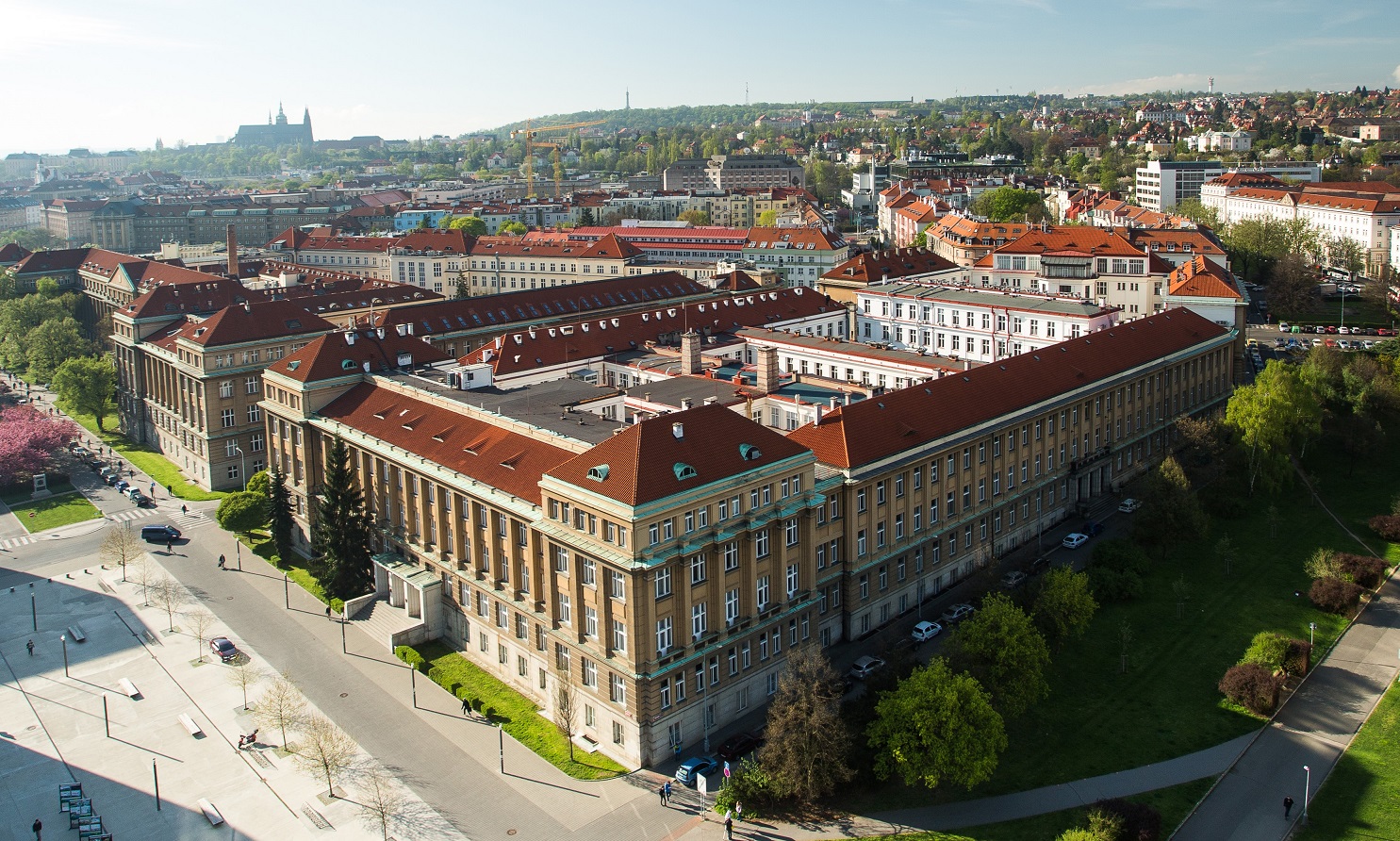
[urlnadstranka] =>
[obrazek] =>
[iduzel] => 29726
[canonical_url] =>
[skupina_www] => Array
(
)
[url] => /about
[sablona] => stdClass Object
(
[class] => stranka_submenu
[html] =>
[css] =>
[js] =>
[autonomni] => 1
)
)
[67212] => stdClass Object
(
[nazev] =>
[seo_title] => Pseudocronobacter
[seo_desc] =>
[autor] =>
[autor_email] =>
[obsah] => Main spectrum projections of "pseudo-Cronobacter" strains from the article B. Svobodová, J. Vlach, P. Junková, L. Karamonová, M. Blažková & L. Fukal: Novel Method for Reliable Identification of Siccibacter and Franconibacter Strains: from “Pseudo-Cronobacter” to New Enterobacteriaceae Genera. Applied and Environmental Microbiology 83(13) e00234-17. DOI: 10.1128/AEM.00234-17.
EB29_Franconibacter_helveticus_MspExport.btmsp
EB31_Franconibacter_helveticus_MspExport.btmsp
EB32_Franconibacter_helveticus_MspExport.btmsp
EB33_Franconibacter_helveticus_MspExport.btmsp
EB35_Franconibacter_helveticus_MspExport.btmsp
EB38_Franconibacter_pulveris_MspExport.btmsp
EB39_Franconibacter_pulveris_MspExport.btmsp
EB41_Franconibacter_pulveris_MspExport.btmsp
EB42_Franconibacter_pulveris_MspExport.btmsp
EB44_Siccibacter_turicensis_MspExport.btmsp
EB45_Siccibacter_turicensis_MspExport.btmsp
Also available at Zenodo

[urlnadstranka] =>
[ogobrazek] =>
[pozadi] =>
[iduzel] => 67212
[canonical_url] =>
[skupina_www] => Array
(
)
[url] => /pseudocronobacter-en
[sablona] => stdClass Object
(
[class] => stranka
[html] =>
[css] =>
[js] =>
[autonomni] => 1
)
)
[50177] => stdClass Object
(
[nazev] => Research
[seo_title] => Research
[seo_desc] =>
[autor] =>
[autor_email] =>
[obsah] => Department of biochemistry and microbiology focus on basic research in areas of retroviral molecular biology, proteomics, plant physiology and molecular genetics, enzymology, environmental microbiology, food microbiology and bioanalytical methods. These activities create a platform for applied research aimed at developing modern therapeutic approaches, bioremediation of inorganic and organic pollutants, monitoring food safety and quality (the department also operates accredited Testing Laboratory of the Institute of Biochemistry and Microbiology) or plant-pathogen interaction. Research in our department is in many cases interdisciplinary and, in addition to close professional cooperation between the individual laboratories of the department, it would be unthinkable without cooperation with a number of national and foreign groups within the framework of joint research programs and projects. Currently, we are working on projects supported by the Czech Science Foundation, Technology Agency of the Czech Republic, Ministry of Agriculture of the Czech Republic, Ministry of Industry and Trade of the Czech Republic and the Ministry of Education and Sports.
[urlnadstranka] =>
[obrazek] =>
[iduzel] => 50177
[canonical_url] =>
[skupina_www] => Array
(
)
[url] => /research
[sablona] => stdClass Object
(
[class] => stranka_submenu
[html] =>
[css] =>
[js] =>
[autonomni] => 1
)
)
[42326] => stdClass Object
(
[nazev] => Students
[seo_title] => Students
[seo_desc] =>
[autor] =>
[autor_email] =>
[obsah] => Department of Biochemistry and Microbiology offers bachelor courses in core disciplines (biochemistry, microbiology, biology and others). We also participate on courses for the novel bachelor program focused on forensic sciences. Biochemistry courses are offered to students of all faculties of our university. Our department organizes master programmes General and Applied Biochemistry, Microbiology and Clinical Biochemistry.
Advanced Biochemistry, Applied Enzymology, Environmental Microbiology, Food microbiology and Genetic engineering are delivered in English for foreign students.
The department is accredited for doctoral education of biochemists and microbiologists.
[urlnadstranka] =>
[obrazek] =>
[iduzel] => 42326
[canonical_url] =>
[skupina_www] => Array
(
)
[url] => /students
[sablona] => stdClass Object
(
[class] => stranka_submenu
[html] =>
[css] =>
[js] =>
[autonomni] => 1
)
)
[29715] => stdClass Object
(
[nazev] =>
[seo_title] => Homepage
[seo_desc] =>
[autor] =>
[autor_email] =>
[obsah] => Content of english website is limited. We are working on translation.
[urlnadstranka] =>
[ogobrazek] =>
[pozadi] =>
[iduzel] => 29715
[canonical_url] =>
[skupina_www] => Array
(
)
[url] => /home
[sablona] => stdClass Object
(
[class] => boxy
[html] =>
[css] =>
[js] => $(function() {
setInterval(function () { $('*[data-countdown]').each(function() { CountDownIt('#'+$(this).attr("id")); }); },1000);
setInterval(function () { $('.homebox_slider:not(.stop)').each(function () { slide($(this),true); }); },5000);
});
function CountDownIt(selector) {
var el=$(selector);foo = new Date;
var unixtime = el.attr('data-countdown')*1-parseInt(foo.getTime() / 1000); if(unixtime<0) unixtime=0;
var dnu = 1*parseInt(unixtime / (3600*24)); unixtime=unixtime-(dnu*(3600*24));
var hodin = 1*parseInt(unixtime / (3600)); unixtime=unixtime-(hodin*(3600));
var minut = 1*parseInt(unixtime / (60)); unixtime=unixtime-(minut*(60));
if(unixtime<10) {unixtime='0'+unixtime;}
if(dnu<10) {unixtime='0'+dnu;}
if(hodin<10) {unixtime='0'+hodin;}
if(minut<10) {unixtime='0'+minut;}
el.html(dnu+':'+hodin+':'+minut+':'+unixtime);
}
function slide(el,vlevo) {
if(el.length<1) return false; var leva=el.find('.content').position().left; var sirka=el.width(); var pocet=el.find('.content .homebox').length-1;
var cislo=leva/sirka*-1; if(vlevo) { if(cislo+1>pocet) cislo=0; else cislo++; } else { if(cislo==0) cislo=pocet-1; else cislo--; }
el.find('.content').animate({'left':-1*cislo*sirka});
el.find('.slider_puntiky a').removeClass('selected');
el.find('.slider_puntiky a.puntik'+cislo).addClass('selected');
return false;
}
function slideTo(el,cislo) {
if(el.length<1) return false; var sirka=el.width(); var pocet=el.find('.content .homebox').length-1; if(cislo<0 || cislo>pocet) return false;
el.find('.content').animate({'left':-1*cislo*sirka});
el.find('.slider_puntiky a').removeClass('selected');
el.find('.slider_puntiky a.puntik'+cislo).addClass('selected');
return false;
}
[autonomni] => 1
)
)
[24134] => stdClass Object
(
[obsah] =>
[iduzel] => 24134
[canonical_url] =>
[skupina_www] => Array
(
)
[url] =>
[sablona] => stdClass Object
(
[class] =>
[html] =>
[css] =>
[js] =>
[autonomni] =>
)
)
)
[iduzel] => 29707
[canonical_url] =>
[skupina_www] => Array
(
)
[url] =>
[sablona] => stdClass Object
(
[class] => dokumenty
[html] =>
[css] =>
[js] =>
[autonomni] => 0
)
)
)
[sablona] => stdClass Object
(
[class] => web
[html] =>
[css] =>
[js] =>
[autonomni] => 1
)
[api_suffix] =>
)
DATA
stdClass Object
(
[nazev] => Research groups
[seo_title] => Research groups
[seo_desc] =>
[autor] =>
[autor_email] =>
[autor_no] =>
[obsah] => Department of biochemistry and microbiology focus on basic research in areas of retroviral molecular biology, proteomics, plant physiology and molecular genetics, enzymology, environmental microbiology, food microbiology and bioanalytical methods. These activities create a platform for applied research aimed at developing modern therapeutic approaches, bioremediation of inorganic and organic pollutants, monitoring food safety and quality (the department also operates accredited Testing Laboratory of the Institute of Biochemistry and Microbiology) or plant-pathogen interaction. Research in our department is in many cases interdisciplinary and, in addition to close professional cooperation between the individual laboratories of the department, it would be unthinkable without cooperation with a number of national and foreign groups within the framework of joint research programs and projects. Currently, we are working on projects supported by the Czech Science Foundation, Technology Agency of the Czech Republic, Ministry of Agriculture of the Czech Republic, Ministry of Industry and Trade of the Czech Republic and the Ministry of Education and Sports.
[submenuno] =>
[drobeckyno] =>
[urlnadstranka] =>
[ogobrazek] =>
[pozadi] =>
[newurl_domain] => 'biomikro.vscht.cz'
[newurl_jazyk] => 'en'
[newurl_akce] => '/research/research-groups'
[newurl_iduzel] => 50285
[newurl_path] => 8548/29628/29630/29707/50177/50285
[newurl_path_link] => Odkaz na newurlCMS
[iduzel] => 50285
[platne_od] => 19.04.2023 11:35:00
[zmeneno_cas] => 19.04.2023 11:35:27.228549
[zmeneno_uzivatel_jmeno] => Michal Strejček
[canonical_url] =>
[idvazba] => 90008
[cms_time] => 1752882118
[skupina_www] => Array
(
)
[slovnik] => Array
(
)
[poduzel] => stdClass Object
(
[52485] => stdClass Object
(
[nazev] => Group of Applied Proteomics
[seo_title] => Laboratory of Applied Proteomics
[seo_desc] =>
[autor] =>
[autor_email] =>
[obsah] => Home Publications
Our lab group is focused on applications of the proteomics approaches using mass spectrometry as a detection endpoint. Using tools of the mass spectrometry we can study a broad spectrum of biological systems on the molecular level. Proteomics can be characterised as a field of the biochemistry that follows up complex studying of proteins in the specific time under defined conditions and is the one of the most dynamic and evolving science fields.
For the studying of proteins we use the mass spectrometric techniques: MALDI-TOF/TOF and LC-ESI-Q-TOF.
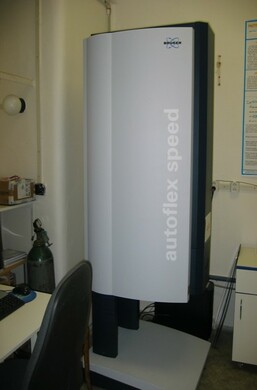
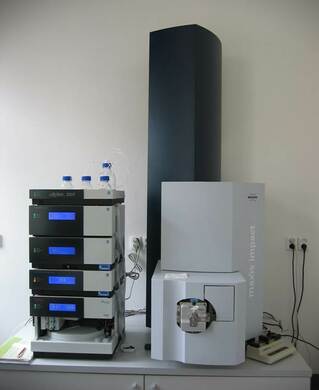
Examples of Research Topics
- Identification of proteins involved in crop stress reaction
- Studying of membrane complexes associated with signal paths of plants
- Proteomics aspects of mineralized heart valves
- Protein analysis of artworks and historical mortars
- Proteomic analysis of alveolar bones in connection with oral surgery
- Proteomic analyses of bioliquids of patients with carcinomas and neurodenerative diseases
- Identification of zooplankton
- Distinguishing of animal species origin of parchments and hairs
- Proteomics analysis of retroviruses
- Identification of pathogen microorganisms
- Development of techniques for protein quantification by mass spectrometry (methods iTRAQ, dimethyl labelling, TOP3 etc)
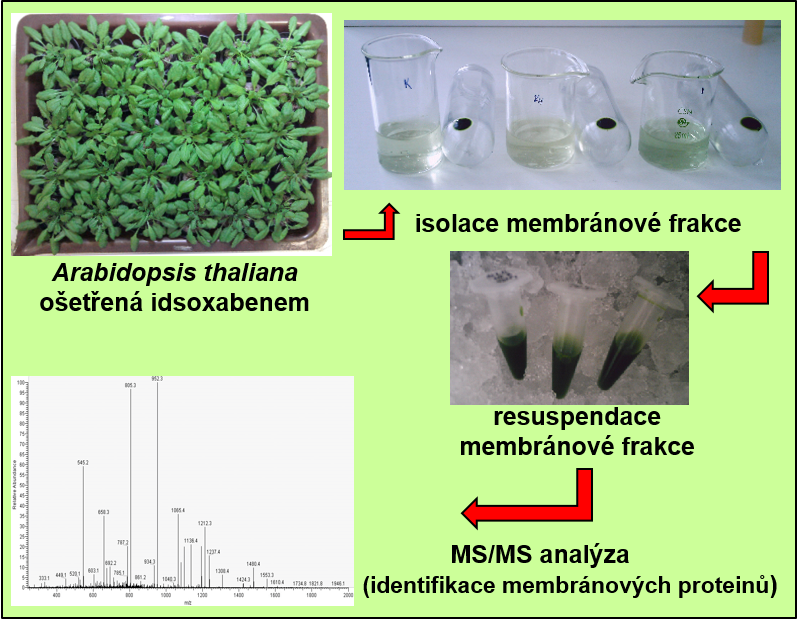
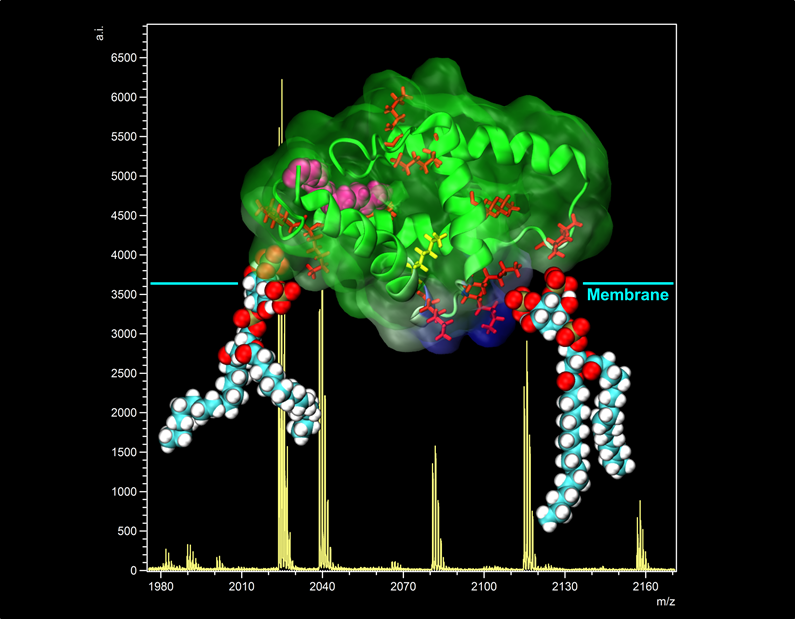
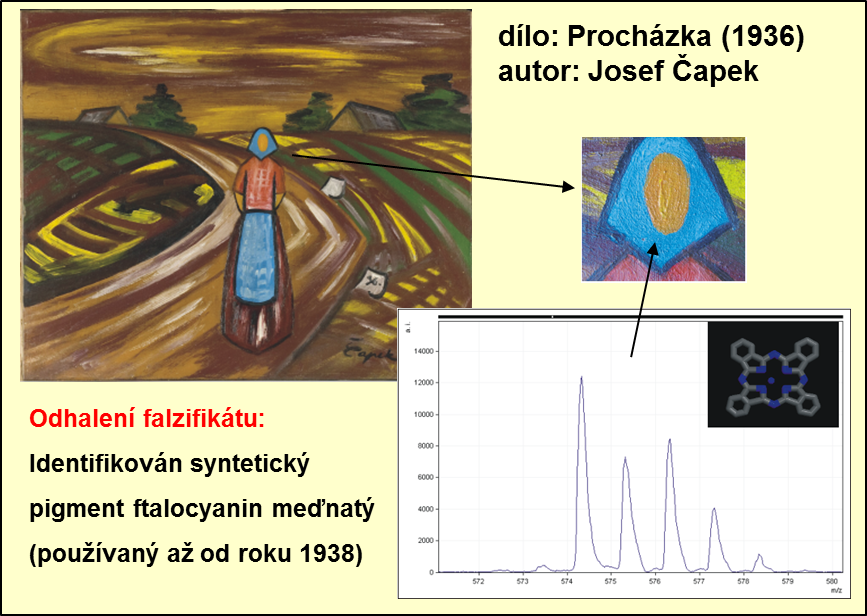
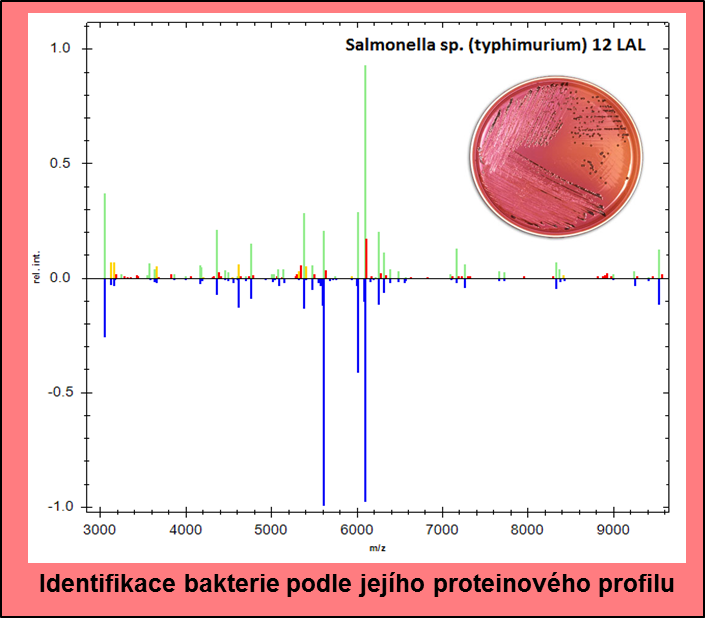
Methods
- Peptide mass fingerprinting → protein identification
- Surface mapping → study of protein conformation
- Biotyping → identification of microorganism
- Protein quantification (iTRAQ, dimethyl labelling, SIM, TOP3, MeanInt)
- Cross-linking and pull-down of membrane proteins
head of the group:
professor:
prof. RNDr. Milan Kodíček, CSc.
associate professor:
doc. Ing. Mgr. Štěpánka Kučková, Ph.D.
assistant professors:
Ph.D. Students:
Ing. Iva Pitelková
Ing. Lucie Maršálová
Ing. Lucie Coufalová
[iduzel] => 56543 [canonical_url] => [skupina_www] => Array ( ) [url] => [sablona] => stdClass Object ( [class] => infobox [html] => [css] => [js] => [autonomni] => 0 ) ) [54980] => stdClass Object ( [obsah] => [iduzel] => 54980 [canonical_url] => [skupina_www] => Array ( ) [url] => [sablona] => stdClass Object ( [class] => slider [html] => [css] => [js] => [autonomni] => 0 ) ) ) [iduzel] => 52485 [canonical_url] => [skupina_www] => Array ( ) [url] => /research/research-groups/proteomics [sablona] => stdClass Object ( [class] => stranka [html] => [css] => [js] => [autonomni] => 1 ) ) [69017] => stdClass Object ( [nazev] => Laboratory of Bacterial and Tumor Resistance [seo_title] => Laboratory of Bacterial and Tumor Resistance [seo_desc] => [autor] => [autor_email] => [obsah] =>Laboratory of Bacterial and Tumor Resistance
Home Projects Publications Equipment Members News
Drug resistance is a major problem today, affecting many disciplines - microbiology, oncology, dermatology, and neurology; it reduces the effectiveness of treatment and quality of life, increases the cost of treatment, and most importantly increases mortality. As the development of new drugs is no longer sufficiently progressive due to the growth rate of resistance, it is necessary to look for alternative treatment solutions. Such an alternative may be an adjuvant - a substance that restores efficacy to old, non-functional drugs to which resistance has already developed by a known mechanism. Our laboratory is engaged in searching for new adjuvants for treating bacterial infections and cancer.
Bacterial resistance
Augmentin, a combination of amoxicillin (a β-lactam antibiotic) and clavulanic acid (an adjuvant that inhibits β-lactamases), has been used in clinical practice for more than 40 years. During this time, it has proven its efficacy, usefulness, and minimal development of resistance. Other β-lactam adjuvants soon followed. Surprisingly, however, β-lactamases inhibitors are the only adjuvants approved for adjuvant therapy these days, even though several enzymes that modify the structure of antibiotics (destructases) are known. This opens the search for new effective inhibitors of other bacterial destructases.
Resistance of eukaryotic cells
Currently, about one in five people in Western countries is treated for neurological problems such as depression, anxiety, or epilepsy. One in three of these people will eventually develop resistance to the drugs they are given. Resistance to chemotherapy drugs is a similarly serious problem and is responsible for most cancer deaths. The common denominator in these cases is usually the overproduction of transmembrane efflux pumps that reduce intracellular localization of the drug below the therapeutic dose. Thus, the active adjuvant in this case is an inhibitor of these efflux pumps.
In bacterial cells, we use nanopore sequencing of clinical isolates (1) to identify the bacterial mechanisms to eliminate antibiotics (2). We then clone the genes responsible for these resistances into a library of bacterial strains, where each strain carries a single resistance determinant (3). Then we use this library for high-throughput testing of compounds in an attempt to find those that can revert the resistant phenotype to a sensitive one in the presence of antibiotics. If such substances are found, we test their inhibitory activity on isolated recombinant enzymes (4). We then return promising substances to clinical practice to test their specificity against different enzymes of the same class and their selectivity against different antibiotic-resistant bacterial isolates (5).
In cancer cells, we focus on modulation of transmembrane efflux pump activity and NRF2 signalling pathway. We use reporter assays and a collection of cancer cell lines and their sublines resistant to chemotherapeutics. Again, our goal is to search for new adjuvants (inhibitors) to return efficacy to existing chemotherapeutics. We then validate promising inhibitors in more complex in vitro tumour models mimicking physiological tumour parameters. Specifically, these include spheroids and organoids derived from patient biopsies. We are subsequently developing systems for targeted delivery of inhibitors to tumour cells and are using these systems in vivo experiments to validate the activity of our inhibitors in mammalian cells.
Home Projects Publications Equipment Members News
MDR MODULATION TESTS
MDR modulation assays identify compounds that increase the sensitivity of cancer cells to treatment. These assays investigate different mechanisms of resistance such as efflux pumps, apoptotic pathways and cellular metabolism. Typical approaches include combination assays with chemotherapeutics, efflux pump inhibitors, apoptosis modulators and metabolism modulators. MDR modulation assays are a key tool for identifying new drug combinations and personalised medicine in the fight against tumour resistance.
Instrumentation: Automated pipetting station Biomek FX Laboratory Workstation (Beckman Coulter Life Sciences, USA)
ACCUMULATION TESTS
Accumulation tests are laboratory methods used to test the activity of efflux pumps in cells. Efflux pumps are transport proteins that actively remove substances, such as toxins or drugs, from cells. These tests use fluorescent compounds to assess the functionality of these pumps. In our laboratory, we study the activity of the efflux pumps P-glycoprotein and BCRP.
Instrumentation: automatic cell counter Cellometer Luna-II (Logos biosystems, South Korea)
WESTERN BLOT
Western blot is a laboratory technique used to detect specific proteins in a sample. Proteins are first separated by size by gel electrophoresis, then transferred to a membrane. Specific antibodies are applied to the membrane, which bind to the target protein and are then detected using an enzyme coupled to a secondary antibody. The resulting signal is visualised, allowing identification and quantification of the target protein.
ELISA
ELISA (enzyme-linked immunosorbent assay) is an analytical method for the quantitative determination of various antigens. It is based on the highly specific interaction of an antigen and an antibody with an enzyme (usually peroxidase or alkaline phosphatase) covalently bound to one of the partners. The enzyme catalyses the chemical conversion of a substrate added to the reaction mixture into a coloured product. This is then measured spectrophotometrically.
Instrumentation: HydroSpeed washer (Tecan, Switzerland), Infinite F Nano+ microplate reader (Tecan, Switzerland).
CYTOTOXICITY
Cell lines derived from human tissues are used to monitor toxicity, most commonly dermal fibroblasts or keratinocytes for substances intended for dermal application and renal cells for oral administration. Antitumour activity is then monitored as the ratio of cytotoxicity against the control cell line and against the tumour cell line. Through extensive national and international collaborations, the laboratory has a rich collection of tumour cell lines that are resistant to chemotherapeutic agents, making it possible to monitor collateral sensitivity, i.e. increased cytotoxicity of agents against a drug-resistant versus a drug-sensitive cell line. Cytotoxicity is usually monitored using the standard resazurin method, which is based on cell metabolic activity, where living cells metabolise resazurin to a fluorescent product.
Instrumentation: SpectraMax i3x MiniMax multimodal microplate reader (Molecular Devices, USA), Dispensor liquid and cell dispenser (BioTech, USA).
LUCIFERASE REPORTER ASSAYS
Luciferase reporter assays are laboratory techniques used to measure gene expression and study promoter activity. They use the enzyme luciferase, which catalyses a reaction that results in the emission of light when a substrate is added. The light signal is quantified by a luminometer, providing information about the activity of a particular promoter or gene expression. These assays are used to study promoter activity, signalling pathways and gene regulation. In our laboratory we focus on promoters associated with the transcription factors NFΚB, Nrf2 and p53.
Instrumentation: Temperature controlled incubators with CO2 atmosphere (Memmert, Germany; ThermoFisher Scientific, USA), Laminar Boxes (BioAir, Spain).
POLYMERASE CHAIN REACTION (PCR)
The Polymerase Chain Reaction (PCR) is a method used to amplify specific stretches of DNA. The process involves three steps: denaturation of the DNA, annealing of the primers and extension of the target region, which are repeated in several cycles. This method allows a large number of DNA copies to be made quickly and accurately, even from a small initial sample. It is used in the cloning, identification and production of proteins and other molecules. The second generation of this method - quantitative PCR with template DNA complementary to the original RNA (RT-qPCR) - allows the quantification of the transcription of various bacterial and tumour genes, especially efflux pump genes.
Instrumentation: CFX96 thermocycler (Bio-Rad, USA), OT-2 pipetting station (Opentrons, USA).
AGAROSE ELECTROPHORESIS
Agarose electrophoresis is a method used to separate biomolecules (DNA, RNA) according to their size and charge. Samples pipetted into wells in an agarose gel are driven by an electric field through the gel towards a positively charged electrode. Smaller molecules pass through the pores of the gel faster than larger molecules, resulting in size separation. Specific dyes are then used to visualise the samples in the gel (electrophoreogram), from which the size of the biomolecule, for example, can be determined. It is used for PCR control and biomolecule size determination.
MICRODILUTION METHOD
The microdilution method (ISO 20776-1) is a quantitative laboratory method for expressing the susceptibility of microorganisms to antimicrobial agents. A series of dilutions of the test substance are prepared in microtiter plates to which standardised amounts of microorganisms are added. After incubation, the growth of micro-organisms in each well is assessed. This method is suitable for determining the minimum inhibitory concentration (MIC) and for determining the efficacy of antibiotics and other antimicrobial agents.
Instrumentation: electronic pipettes (Eppendorf, Czech Republic)
TRANSFORMATION OF ESCHERICHIA COLI CELLS WITH A PLASMID CARRYING AN ANTIBIOTIC RESISTANCE GENE
A plasmid carrying a resistance gene (most commonly a gene for a destructase) is prepared in vitro by PCR and Gibson assembly. The plasmid is transformed into E. coli cells by heat shock. This culture is then used to screen for inhibitors of the resistance mechanism and potential adjuvants.
Instrumentation: Thermomixer (LAB MARK a. s., Czech Republic), T-Personal Thermocycler (BioTech, USA).
ISOLATION AND PURIFICATION OF THE RECOMBINANT PROTEIN
Transformed E. coli cells are disrupted and the supernatant obtained after centrifugation is purified by affinity chromatography (most commonly Ni-NTA-based). Ni-NTA-based affinity chromatography uses the specific binding of histidine-tagged proteins to nickel ions immobilised on agarose. The protein extract is applied to the column, where the histidine-tagged proteins are immobilised, while the contaminants pass through the column. The proteins labelled in this way are eluted with imidazole, which competes with the histidine residues for binding to the nickel ions. This results in the clean isolation of the target proteins from the complex mixture. The proteins (destructases) are then used to measure enzymatic activity and to search for suitable inhibitors.
PREPARATION OF IN VITRO BODY BARRIER MODELS
In vitro body barrier models are prepared to test the transfer of various substances, from dietary supplements to potential pharmaceuticals. At the same time, they are more advanced models for the study of physiological processes such as drug resistance or inflammation. In particular, we focus on models of the blood-brain barrier, the intestinal barrier and the cornea of the eye. These models are prepared by culturing multiple cell lines simultaneously on Transwell inserts in different configurations to mimic the in vivo situation as closely as possible. Cells are cultured on the inserts until layers of tight junctions are formed, resulting in an increase in electrical resistance.
Instrumentation: Millicell ERS-2 epithelial volt-ohm meter (Merck Millipore, USA).
Home Projects Publications Equipment Members News
Ministry of Education, Youth and Sports of the Czech Republic
INTER-COST LUC24099
Establishment of a platform for high-throughput testing of antibiotic resistance modulators for combination (adjuvant) therapy
According to the World Health Organization (WHO), ever-expanding antibiotic resistance is a global threat that we are currently facing. According to data from the European Antimicrobial Resistance Surveillance Network (EARS-Net), up to 42% of P. aeruginosa isolates were reported to be resistant to aminoglycosides in 2022 (Romania), and 17% of aminoglycoside-resistant isolates in the Czech Republic. Multi-resistant, i.e. resistant to at least three classes of antibiotics, was reported in up to 54% of all isolates (Romania) and 21% of isolates in the Czech Republic. Despite the increasing resistance, however, very few new antibiotics are approved and most often only modifications of existing chemical structures acting by the same mechanism as the initial antibiotics to which resistance has already been described. Thus, the rate of discovery of new antibiotics is lagging behind the development of antibiotic resistance and, in accordance with the Action Plan of the National Antibiotic Programme of the Czech Republic (AP NAP, Objective VI), new strategies must be sought to combat pathogenic bacteria.
One such new approach to fighting resistance is adjuvant therapy, which combines existing (ineffective) antibiotics with inhibitors of the mechanism by which the bacteria eliminates the antibiotic. The aim of this project is to find new inhibitors that could serve as adjuvants for combination therapy of resistant pseudomonad infections.
Národní agentura pro zemědělský výzkum (NAZV)
QL24010123
Poruchy reprodukce prasat - zátěž chovů škodlivými látkami
VŠCHT Praha – Ústav analýzy potravin a výživy – prof. Ing. Jana Pulkrabová, Ph.D.
Výzkumný ústav živočišné výroby, v. v. i.; PLEMENÁŘSKÉ SLUŽBY a.s.; Univerzita Karlova
Cílem projektu je náhled do zátěže vybranými polutanty ve vybraných chovech prasat a testování, nakolik může tato zátěž ovlivnit reprodukci prasat. V projektu budou vyvíjeny postupy, jak nepříznivé dopady těchto polutantů potlačit. Projekt se soustředí kromě jiných polutantů na polyfluorované a perfluorované alkyly (PFAS). Ty se hojně vyskytují v životním prostředí a pro svou stabilitu jsou označovány jako „věčné chemikálie“. Připravované výrazné omezení používání PFAS v zemích EU tedy nepovede k jejich úplnému vymizení a dopady na zdraví zvířat i lidí budou ještě dlouho přetrvávat. První sonda do českých chovů prasat odhalí, jak významný problém PFAS představují v našich podmínkách.
Operational Programme of Jan Amos Komenský
CZ.02.01.01/00/22_008/0004597
Institute of Microbiology of the Czech Academy of Sciences, University of Chemistry and Technology Prague, Faculty of Science Charles University in Prague
The most important player in the field of microbiology in the Czech Republic together with two domestic partners will join forces with world-leading research institutions to unravel the processes behind the establishment and evolution of microbiomes in different hosts (plants, fungi and animals, including humans), the mechanisms of information exchange between microbes and their hosts and between microbes and each other that define their role in host and ecosystem health. The outcome will be innovative applications in medicine and ecology.
Grantová agentura České republiky
No. 24-10000S
Glykosylované mykotoxiny: jejich struktura, výskyt, příprava a zdravotní dopady
VŠCHT Praha – Ústav analýzy potravin a výživy – doc. Ing. Milena Stránská, Ph.D.
Mikrobiologický ústav AV ČR – Laboratoř biotransformací – prof. Ing. Vladimír Křen, Ph.D.
V potravinách a krmivech se vyskytují různé toxické látky, představující hrozbu pro lidi i zvířata. Mezi nejrozšířenější přírodní toxiny patří mykotoxiny, přičemž fusariové toxiny (T2 a HT2) jsou hlavními kontaminanty obilovin. Konjugovaným mykotoxinům v rostlinných potravinách, zejména mono-/oligoglykosidům mykotoxinů, je nyní věnována velká pozornost vzhledem k jejich předpokládané biologické dostupnosti a souvisejícím zdravotním rizikům. Cílem projektu je nejen biosyntéza těchto standardů, ale také získání relevantních informací o mikrobiální biotransformaci T2/HT2-(oligo)glykosidů a biologické dostupnosti a toxicitě těchto sloučenin.
Grantová agentura České republiky
No. 21-00551S
Metabolity a vybrané deriváty potravinových flavonoidů - příprava a biologická aktivita
Mikrobiologický ústav AV ČR – Laboratoř biotransformací – doc. Ing. Kateřina Valentová, Ph.D.
Polyfenoly patří mezi biologicky silně aktivní složky potravin a potravinových doplňků. Aktivní složkou mnoha nutraceutických přípravků je polyfenolový extrakt silymarin, populární hlavně díky svému hepatoprotektivnímu účinku. Ale složky silymarinu, tj. flavonoly a flavonolignany, vykazují také různé jiné biologické aktivity, z nichž mnohé dosud nebyly popsány, a nebyl odhalen mechanismus jejich účinku. V tomto projektu se zaměřujeme na opomíjené a nevyužívané komponenty silymarinu (silychristin, silydianin, 2,3-dehydroflavonolignany), jejich metabolity fáze II a selektivně modifikované (dehydratované, alkylované, halogenované nebo redukované) deriváty. Vliv modifikace struktury na biologickou aktivitu a biologickou dostupnost je zkoumána pomocí in vitro modelů. Antioxidační, protizánětlivé, protektivní účinky na buňky a modulace mnohočetné lékové resistence jsou studovány za použití živočišných a bakteriálních buněk. Výsledky rozšíří současné znalosti biologické aktivity složek silymarinu a jejich možné zlepšení selektivní modifikací.
Grantová agentura České republiky
No. 22-20860S
Protizánětlivé účinky bioaktivních sloučenin izolovaných z Cannabis sativa L.
Institut klinické a experimentální medicíny – RNDr. Monika Cahová, Ph.D.
VŠCHT Praha – Ústav analýzy potravin a výživy – doc. Ing. Milena Stránská
Fytokanabinoidy, sekundární metabolity Cannabis sativa L., představují unikátní skupinu látek vykazujících četné zdraví prospěšné biologické účinky, včetně protizánětlivého. Subklinický zánět je přitom znám jako hlavní promotor aterosklerózy (tedy aterotrombózy), obvykle následovaný závažnými civilizačními chorobami, infarktem a mozkovou mrtvicí. Hlavním cílem tohoto projektu je izolovat čisté fytokanabinoidy z rostlin konopí a prozkoumat jejich jedinečný a kombinovaný účinek na inhibici prozánětlivých interleukinů v cytokinové signální dráze, a to pomocí systémů in vitro i in vivo. Kromě toho je testována a modifikována biologická dostupnost kanabinoidů pomocí různých nanomicelárních formulací. V neposlední řadě je studován efekt „konopné synergie“ jako interakce kanabinoidů a dalších složek přirozené matrice.
Technologická agentura České republiky
TREND, FW03010400
Bioaktivní látky z organicky produkovaných tradičních českých léčivek a plodin a vývoj nano-enkapsulovaných forem pro použití v dermatologii, kosmetice a posílení obranyschopnosti organismu
EcoFuel Laboratories s.r.o. - doc. Ing. Petr Kaštánek Ph.D.
Botanický ústav AV ČR, v. v. i. - prof. RNDr. Miroslav Vosátka CSc.
BRIKLIS, spol. s r.o. - Ing. Miroslav Medek
PRO-BIO, obchodní společnost s r.o. - Ing. Martin Hutař
VŠCHT Praha – Ústav analýzy potravin a výživy – prof. Ing. Jana Hajšlová CSc.
Cílem projektu je výzkum a optimalizace produkce a izolace bioaktivních látek produkovaných tradičními českými léčivými bylinami, formulace těchto izolovaných látek do vhodných aplikačních forem a in-vitro studium biologické aktivity, případně i penetrace látek buněčnými bariérami modelujícími biologickou dostupnost pro organismus, s finálním záměrem využití takto získaných přírodních účinných látek v dermatologii, nutraceutice, dermokosmetice a obecně pro posílení obranyschopnosti organismu. Bioprospekce jednotlivých extraktů či izolovaných sloučenin či frakcí položí i dostatečný informativní vědecký základ pro lékařské využití (např. zjištěné antimikrobiální aktivity, protinádorové aktivity) včetně využití publikačního potenciálu pro zúčastněná vědecká pracoviště.
Technologická agentura České republiky
NCK, TN02000109
Personalizovaná medicína: Translačním výzkumem k biomedicínským aplikacím.
Univerzita Palackého v Olomouci
Fyziologický ústav AV ČR, v. v. i.
Univerzita Karlova
Masarykova univerzita
Ústav organické chemie a biochemie AV ČR, v. v. i.,
CGB laboratoř a.s., ÚJV Řež, a. s., BIOXSYS s.r.o., MAMA AI Coolma, s.r.o., BioVendor - Laboratorní medicína a.s., CasInvent Pharma, a.s., TestLine Clinical Diagnoscs s.r.o., APIGENEX s.r.o., IntellMed, s.r.o.
Ministry of Education, Youth and Sports of the Czech Republic
LX22NPO5103
National Institute of Virology and Bacteriology
Institute of Organic Chemistry and Biochemistry of the CAS, v. v. i.
Biological Centre of the CAS, v. v. i.
Masaryk University / Central European Institute of Technology
Institute of Microbiology of the CAS, v. v. i.
Charles University / Faculty of Science
Palacký University in Olomouc / Faculty of Medicine
Institute of Molecular Genetics of the CAS, v. v. i.
Institute of Biotechnology - prof. Dr. Ing. Michaela Rumlová Ph.D.
The main objective of the project is to concentrate excellent research teams of the Czech Republic in the National Institute of Virology and Bacteriology (NIVB) in order to implement a common research agenda in the field of virology, bacteriology and the development of antiviral and antibacterial treatments. The National Institute of Virology and Bacteriology (NIVB) aims to make discoveries in the field of infectious diseases that will improve human health. It will develop safe and effective antiviral and antibacterial therapies and prepare platforms for future drug discovery and development against viruses and bacteria with pandemic potential. Despite decades of research, vaccinations and treatments against many infectious diseases are still not available. The importance and urgent need for new treatments is illustrated by the negative health and economic impact of infectious diseases. The development of new therapeutics requires a fundamental understanding of the mechanisms that allow pathogens to infect cells and cause disease, many of which are still poorly understood. Basic and clinical research on viruses and pathogenic bacteria is essential to better understand and develop therapeutic responses to the processes by which pathogens cause disease, how they escape the immune system, and how they resist treatment. The NIVB will therefore pursue cutting-edge research in the areas of (1) pathogen-host interactions, (2) immunity to viruses and bacteria, and (3) treatment of viral and bacterial infections. By working with pathogens that are relevant to current clinical practice, as well as emerging viruses and bacteria, the Institute's research groups will be able to provide expertise and equipment for the study of new pathogens that may spread to the human population in the future. The NIVB will thus become a national authority and knowledge partner for public authorities in this respect.
European Cooperation in Science and Technology
COST Action 21145
European Network for diagnosis and treatment of antibiotic-resistant bacterial infections (EURESTOP)
The emergence and spread of drug-resistant bacteria is a major health and socio-economic threat with global dimensions, evolving towards an emergency/pandemic crisis. There are no drugs available to address the disease and diagnostic tools are ineffective. This negatively affects the treatment and survival of critically ill patients. Drug-resistant bacteria can spread outside the hospital setting, posing a critical risk to the global population. Current research in this area is highly fragmented and mostly monodisciplinary, which limits the development of innovative diagnostic and therapeutic solutions.
European Cooperation in Science and Technology
COST Action 17104
New diagnostic and therapeutic tools against multidrug resistant tumors (STRATAGEM)
Up to 70% of solid tumours are resistant at diagnosis: this means poor quality of life and prognosis for patients, high management costs for European healthcare systems. This action seeks to improve the diagnosis and treatment of patients with MDR tumours and reduce the cost of their treatment.
This action will build the first multidisciplinary network, including academic laboratories, research institutes, small and medium-sized enterprises (SMEs), with a wide range of excellent and non overlapping expertise, aiming to simultaneously improve the diagnosis and treatment of multidrug-resistant (MDR) solid tumours.
Ministry of Education, Youth and Sports of the Czech Republic
INTER-COST LTC19007
Testing of new agents with potential for modulation of resistance in multidrug-resistant strains
A library of compounds - isolated from natural sources, synthesised de novo or provided by partners (in the framework of the collaborative Action CA17104) with the potential to inhibit multidrug resistance will be tested in resistant strains including both bacterial and tumour cell models. Special attention will be paid to inhibition of transmembrane transporters used for intercellular communication (quorum sensing), whose activation leads to expression of virulence factors or formation of biofilms, and transporters serving as efflux pumps for drugs (e.g. methicillin, doxorubicin). The aim of this project is to prepare a database of compounds modulating the activity of transmembrane transporters responsible for multidrug resistance in cancer cells and bacterial strains. These compounds can then be directly used in the pharmaceutical or dermocosmetic industry or can serve as templates for molecular modelling and targeted design of modulators.
Technologická agentura České republiky
Zeta, TJ02000372
Biologicky aktivní látky mikrořas a kmenových buněk rostlin pro využití v kosmetickém průmyslu
Cílem projektu je výzkum a optimalizace produkce a izolace bioaktivních látek produkovaných vybranými mikrořasami, kalusovými či suspenzními kulturami rostlinných buněk, formulace těchto izolovaných látek do vhodných aplikačních forem a in-vitro studium penetrace látek pokožkou, modelující biologickou dostupnost pro organismus, s finálním záměrem využití takto získaných přírodních účinných látek v dermatologii či dermokosmetice. Výzkum a screening biologických aktivit jednotlivých extraktů, olejů, nanoemulzí a liposomů z mikrořas a suspenzních kultur rostlin položí i dostatečný informativní vědecký základ pro lékařské využití (př. zjištěné antimikrobiální aktivity) včetně využití publikační potenciálu pro zúčastněná vědecká pracoviště.
Visegrad Fund
No. 22010090
Modulation of multidrug resistance and posttreatment regeneration stimulated by natural compounds
Comenius University in Bratislava, Faculty of Medicine – doc. Ing. Helena Gbelcová, Ph.D.
University of Szeged – assoc. prof. Dr. Gabriella Spengler, Ph.D.
Drug resistance is playing an increasing role in the success of treatment of bacterial infections and solid tumors. A major limitation to the efficacy of chemotherapy is the multidrug resistance (MDR) phenotype, multiple resistance to different anticancer drugs.The search for efflux pump inhibitors may significantly increase the efficacy of commonly used anticancer drugs and antibiotics. We aim to find such compounds in plant extracts, fractions and purified compounds or among de novo synthesized or modified compounds using validated methods. This project seeks to improve the treatment of patients with MDR tumours and reduce the cost of their treatment. Secondly, the project aims to increase the level of research in the Visegrad region in the field of MDR.
[urlnadstranka] => [ogobrazek] => [pozadi] => [iduzel] => 81660 [canonical_url] => [skupina_www] => Array ( ) [url] => /research/research-groups/resistance/projects [sablona] => stdClass Object ( [class] => stranka [html] => [css] => [js] => [autonomni] => 1 ) ) [81655] => stdClass Object ( [nazev] => [seo_title] => News [seo_desc] => [autor] => [autor_email] => [obsah] =>Laboratory of Bacterial and Tumor Resistance
Home Projects Publications Equipment Members News
Ing. Simona Dobiasová, Ph.D.
https://chiarariganti.wordpress.com/
We are happy to announce that our graduate Simča has been awarded the prestigious Marie Sklodowska-Curie Postdoctoral Fellowships (MCPF)! In this project, she will work on the development of glioblastoma and blood tumor barrier models to investigate combination therapy with anticancer agents and efflux pump inhibitors. The goal of her work is to create models that mimic conditions in the human body as closely as possible. This will allow more detailed studies of the combination of anticancer drugs and efflux pump inhibitors, which could increase the effectiveness of the treatment. This research has the potential to expand treatment options for cancer patients and significantly improve their chances of survival.
Simča is going to work on the project at the University of Torino in the laboratory of Prof. Chiara Riganti. We are proud of her and wish her every success in her scientific journey!
TEAM-BUILDING
Christmas party
18 December 2024, Prague
This year we managed to stop for a moment together in the pre-Christmas rush, meet over a delicious meal and welcome the Christmas holidays together. Our group is growing and we really appreciate the fact that our alumni like to come back. We wish you a successful 2025!
CONFERENCE
ARTIFICIAL INTELLIGENCE – Reshaping biomedical and healthcare research (FEBS-IUBMB-ENABLE Conference)
Ing. Ondřej Strnad, Ing. Tomáš Nejedlý
4 – 6 December 2024, Singapur
Our PhD students, Tomáš Nejedlý and Ondřej Strnad, attended the FEBS-IUBMB-ENABLE Conference, which took place this year at Nanyang Technological University (NTU) in Singapore. The main theme was the role of artificial intelligence in reshaping biomedical and healthcare research. The conference featured inspiring talks on the application of AI in biomedicine, diagnostics, and personalized medicine. The program also included a Career Day with practical advice for young researchers and panel discussions focusing on the transition from research to entrepreneurship.
CONFERENCE
10th Congress of Clinical Microbiology, Infectious Diseases and Epidemiology (KMINE 2024)
Doc. Jitka Viktorová, Ing. Michal Dvořák, Ing. Jan Špaček, Ing. Markéta Častorálová, Ph.D.
30 October – 1 November 2024, Clarion Congress Hotel Ostrava
https://kmine-infekce-2024.cz/
Our group attended the Czech-Slovak KMINE 2024 congress in large numbers. At the most important national meeting of clinical microbiologists we established new contacts and set the direction of existing collaborations. During the lectures, we learned a lot of news across the topical issues in local epidemiology and gained a lot of suggestions with the future direction of our research to include the most current topics.
OPEN DAY
Ing. Bára Křížkovská, Ph.D.
3 September 2024, Praha
Traditionally, immediately after the student scientific conference, an Open Day was held at our school, the aim of which is to attract new promising young people interested in studying at our faculty. Our group was represented by Barča Křížkovská and she looked really good in a black T-shirt with the logo of the University of Science and Technology! Thank you for a great representation!
STUDENT SCIENTIFIC CONFERENCE
Bc. Dominika Mrázková
28 November 2024, Prague
Only Domča participated in this year's regular student scientific conference for our group. However, she represented our group very well and won the sponsor's prize. Thank you and congratulations!
TEAMBUILDING
26 November 2024, Prague
A collective of our PhD students recently took part in a Harry Potter-themed escape game. The participants worked together to successfully solve all the challenges and made it out of the room in time. This experiential activity not only tested their teamwork skills, but also brought them closer together and brought a lot of fun.
CONFERENCE
Antibiotic resistance in the Czech Republic: how to stop the unstoppable together
Ing. Anna Ludvíková, Ing. Jan Špaček, Ing. Michal Dvořák
14 – 15 November 2024, Praha
https://czepar.cz/czepar-konference/
We participated in the Czech conference "Antibiotic resistance in the Czech Republic: how to stop the unstoppable together", which gave space to many experts from different fields to shed light on the issue of antibiotic resistance as a whole. This conference has shown us that antibiotic resistance is not only a problem of nosocomial infections, but also affects many other fields and therefore it is very important to address this issue.
CHEMISTS' BALL
14 October 2024, Praha
Four of our Ph.D. students Tomáš Nejedlý, Ondřej Strnad, Emílie Kučerová and Petra Třešňáková, attended the 6th Annual University Ball at the National House of Vinohrady. During the event, the Vitriol Awards were announced, with Ing. Eva Jablonská, Ph.D., being recognized as the most popular teacher of the Faculty of Food and Biochemical Technology. The evening featured dancing, a performance by the school orchestra, a theatrical show by the DI(v)OCH, and a midnight surprise – a dance performance by our master’s student, Bc. Dominika Mrázková.
TEAMBUILDING
25 – 27 October, Znojmo
Already the second teambuilding in Znojmo brought a lot of fun and allowed closer integration of new members into the team. We enjoyed the beauty of the South Moravian town again despite some rain.
UNIVERSITY LABYRINTH RUN
23 October 2024, Praha
Our four Ph.D. students Ondřej Strnad, Tomáš Nejedlý, Emílie Kučerová and Petra Třešňáková, took on the challenge of the " UCT Labyrinth" run, a course they know like the back of their hand. Their insider knowledge paid off, securing 1st and 2nd place in the woman’s Ph.D. & Staff category, and 2nd and 3rd place in the men’s Ph.D. & Staff category. It seems years of navigating the twists and turns of research prepared them perfectly for this race!
NETWORKING 2024 OLOMOUC: ANIMAL MODELS
Ing. Tomáš Nejedlý, Ing. Emílie Kučerová
11 September, Olomouc
https://nivb.cz/en/2024/09/18/networking-2024-v-olomouci-zvireci-modely/
Two of our PhD students, Tomáš Nejedlý and Emílie Kučerová, participated in the Networking 2024: Methodological Workshop on Animal Models, held at the Institute of Molecular and Translational Medicine at Palacký University in Olomouc. The workshop focused on research techniques in animal models, which are essential for advancing biomedical sciences and developing new therapies.
STUDENT INTERNSHIP
Ing. Ondřej Strnad
2 - 30 September 2024, Vienna
During a month-long internship at the Medical University of Vienna, our PhD student Ondřej Strnad specialized in isolating and characterizing immune cells from patient samples through flow cytometry. His research primarily explored the effects of phytocannabinoids on the immunophenotyping of peripheral blood mononuclear cells. The knowledge and skills he gained during this internship will be applied to further experiments and analyses at our institution.
POSTGRADUATE COURSE
Ing. Bára Křížkovská, Ph.D.
4 - 6 September 2024 Tallinn, Estonia
In order to broaden our professional skills, a member of our laboratory participated in a course for proper testing according to EUCAST criteria, organized by the European Society of Clinical Microbiology and Infectious Diseases (ESCMID). The course included a tour of SYNLAB's advanced laboratories and a discussion with experts who are both involved in antimicrobial testing, but also involved in establishing criteria and critical points in antimicrobial and microbial susceptibility testing.
OBHAJOBA DIZERTAČNÍ PRÁCE
Ing. Bára Křížkovská, Ph.D.
3 September 2024, Praha
Svůj čtyřletý doktorát využila Baru na maximum včetně zahraničních stáží v Maďarsku, Votočkova stipendia pro nejlepší studenty fakulty a stipendia ředitele ÚOCHB pro nadané studenty. Její obhajoba dizertační práce na téma Inhibice efluxních pump rezistentních bakteriálních kmenů byla příjemnou tečkou a začátkem samostatné vědecké kariéry.
STUDENTSKÁ STÁŽ
MSc. Artemis Tsirogianni, University of Patras, Greece, research group of prof. Constantinos Athanassopoulos
8 July – 16 August 2024, Praha
The aim of the STSM was to study the antimicrobial and antibiotic-adjuvant activity of a series of chloramphenicol derivatives with an improved pharmacological profile. These compounds were screened against a variety of Gram-positive and Gram-negative resistant bacteria for their antibacterial activity in comparison to the parent molecule.
STUDENTSKÁ STÁŽ
Dr. Annamária Kinces, University of Szeged, Hungary, research group of prof. Hunyadi
1 July – 2 August 2024, Praha
The aim of the STSM was the highthroughput screening of the new antimicrobial agents against MDR bacteria. The biological activity of the synthesized/isolated compounds was evaluated and some hit compounds were further tested using enzymatic assays.
STUDENTSKÁ STÁŽ
Dr. Anna Brodzka, Institute of Organic Chemistry, Polish Academy of Sciences, research group of prof. Ostaszewski
8 -22 July 2024, Praha
The aim of the STSM was the development of the new antimicrobial agents against MDR bacteria. The biological activity of the synthesized compounds was evaluated and some hit compounds will be further tested.
KONFERENCE
Drug Resistance 2024 (Gordon Research Conference)
23 - 28 June 2024, Bryant University in Rhode Island, USA
Účastnili jsme se prestižní mezinárodní konference o lékové rezistenci na Bryant Univerzitě v USA, která nám poskytla příležitost k diskuzím a neformálním setkáním s mnoha odborníky, díky nimž jsme získaly cenné poznatky, inspiraci a možnost navázání budoucích spoluprací. Konference byla pod záštitou GRC (Gordon Research Conference) a reflektovala bakteriální, nádorovou, virovou i fungální rezistenci.
POPULARIZACE VĚDY
VědaFest 2024
19 – June 2024, Praha
Studentka Anna Ludvíková reprezentovala naši laboratoř na letošním VědaFestu, kde potenciální zájemce o studium na VŠCHT seznámila s antibiotickou léčbou a jejími komplikacemi, jako je antibiotická rezistence. Pro tuto akci si připravila kultivační půdy s různými sbírkovými kmeny bakterií a ukázala jejich reakci na přítomnost různých antibiotik.
POPULARIZACE VĚDY
Workshop mikroskopování
18 – 20 June 2024, Praha
Workshop pro středoškolské studenty, který byl letos organizován ve spolupráci s naší studentkou Emčou Kučerovou, byl zaměřený na teoretické i praktické znalosti mikroskopování makroskopických (křídlo a nohy mouchy) i mikroskopických preparátů (buněčné kultury, plísně a kvasinky, směs kvasinek a bakterií, Gramovo barvení bakterií a pak mikroskopování s imerzním olejem).
ÚSPĚCHY STUDENTŮ
Státní závěrečné zkoušky
06/2024
Velká gratulace našim novým inženýrům (Ing. Kutilová, Ing. Kočková, Ing. Třešňáková, Ing. Veverková, Ing. Musil, Ing. Špaček) a bakalářům (Bc. César)! Všem se povedlo obhájit své závěrečné práce, a mnozí z nich zakončují s červeným diplomem! Díky za společné roky, skvělou reprezentaci skupiny a hodně zdaru v budoucím profesním životě těm, co se nerozhodli pokračovat u nás 😉
KONFERENCE
34th European Congress of Clinical Microbiology and Infetious Diseases (ECCMID)
27 - 30 April 2024, Barcelona, Španělsko
Setkání evropských klinických mikrobiologů bylo obrovskou událostí. Mezi vybranými prezentujícími se objevili i Michal Dvořák, Daniela Brdová a Jitka Viktorová. Byla to naše první zkušenost s konferencí, na kterou se sjelo 10 tis. odborníků z oboru z celého světa. Byla to pecka!
KONFERENCE
New Antibacterial Discovery and Development (Gordon Research Conference)
17-22 March 2024, Ventura, United States
Další z mnoha velmi kvalitních konferencí pořádaných pod záštitou GRC (Gordon Research Conference) zaměřených na antibiotickou rezistenci. Za naší skupinu se reprezentace ujala Barča, která se to zhostila se svým typickým entusiasmem a vrátila se spoustou kontaktů a navázaných spoluprací.
STUDENTSKÁ STÁŽ
Erasmus+ program s University of Magallanes, Punta Arenas, Chile
1 February – 28 April 2024, Praha
Třetí a poslední mezinárodní stáž rozvíjející spolupráci mezi naší a patagonskou univerzitou k nám přivedla doktoranda Jorgeho a dva magisterské studenty Diega a Jacqueline. Jejich zkušenosti s nanoporovým sekvenováním a bioinformatickou analýzou dat nám rozšířila obzory a snad i metodologické zázemí pro další výzkum.
STUDENTSKÁ STÁŽ
Erasmus+ program s University of Magallanes, Punta Arenas, Chile
1 February – 28 April 2024, Praha
V rámci mezinárodní spolupráce vyrazili naši dva doktorandi – Tom s Ondrou na tříměsíční stáž do druhého nejjižnějšího města na světě. Zde se věnovali sběru a charakterizaci makrořas, ze kterých jsou následně připravovány extrakty, které jsou u nás testovány pro dermokosmetické účely.
TEAM-BUILDING
Kachekran
29 February 2024
Studenti z naší laboratoře společně se studenty z Chile navštívili 65. ročník legendárního Karnevalu chemiků končícího k ránu. Jak je vidět na fotce, všichni se skvěle bavili a užívali si večer plný hudby, tance a zážitků.
TEAM-BUILDING
vánoční večírek
12 December 2024
I letos jsme se na chvilku zvládli zastavit v předvánočním shonu, sejít se a společně přivítat vánoční svátky. Skupina se nám krásně rozrůstá a moc si vážíme toho, že se k nám rádi vrací i naši absolventi.
ÚSPĚCHY STUDENTŮ
Cena Julie Hamáčkové
30 November 2023
Cena Julie Hamáčkové je soutěž, která vznikla v roce 2015 na VŠCHT Praha v rámci projektu 7.RP EU TRIGGER a projektu MŠMT EUPRO II LE 14016. Cílem Ceny je podpořit zohlednění genderových aspektů ve výzkumné i pedagogické práci. Cena v kategorii Studentské vědecké práce byla udělena naší studentce Bc. Tereze Veverkové za práci Příprava modelu hematoencefalické bariéry in vitro, kterou vypracovává pod vedením Ing. Emílie Kučerové. Oběma patří velké poděkování za reprezentaci a naše gratulace!
SPOLUPRÁCE
ČZU NVAŠTÍVILO VŠCHT
04 December 2023
Druhý ze série společných seminářů se skupinou doc. Havlíka z ČZU se uskutečnil na půdě VŠCHT Praha. Nejprve proběhla exkurze po našich pracovištích, která byla zakončena prezentacemi našich doktorandů, které shrnovali projekty, na kterých pracujeme, a představili naše přístrojové a metodologické zázemí.
KONFERENCE
Studentská vědecká konference (SVK)
23 November 2023
V letošní SVK jsme měli silné zastoupení hned v několika sekcích, a proto není divu, že si naši studenti odnesli i řadu ocenění - Bc. Markéta Kutilová (3. místo v kategorii Aplikovaná mikrobiologie), Bc. Tereza Veverková (1. místo v kategorii Biomedicínské aplikace), Bc. Petra Třešňáková (cena sponzora v kategorii Biomedicínské aplikace), Bc. Jakub Musil (1. místo v kategorii Enzymologie), Bc. Michal Dvořák (2. místo v kategorii Enzymologie). Všem studentům děkujeme za reprezentaci a výhercům gratulujeme!
SPOLUPRÁCE
VŠCHT NAVŠTÍVILO ČZU
02 November 2023
Na zářijové konferenci v Praze se naši doktorandi skamarádili s doktorandy z České zemědělské univerzity ze skupiny doc. Ing. Jaroslava Havlíka, Ph.D., se zaměřením na lidskou výživu, význam polyfenolů v lidském zdraví, analytickou chemii, mikrobiom a metabolomiku. V rámci kultivace a rozvoje vztahů jsme uspořádali první společný seznamovací seminář, kde jsme probrali možnosti vzájemné spolupráce.
POPULARIZACE VĚDY
Den otevřených dvěří
24 – 25 November 2023
Dvě studentky z naší laboratoře (Emilie Kučerová a Anna Ludvíková) se zúčastnily Dne otevřených dveří, kde úspěšně reprezentovaly Ústav biochemie a mikrobiologie ukázkou témat, kterým se věnují.
KONFERENCE
4th International Conference on Food Bioactives & Health
18 – 21 September 2023, Prague, Czech Republic
Dlouho očekávaná konference, jejíž organizačního výboru jsme se stali součástí! Doc. Viktorová byla členkou vědeckého výboru 4. ročníku mezinárodní konference pořádané doc. Valentovou z Mikrobiologického ústavu Akademie věd ČR. S naší hojnou účastí se počet účastníků vyšplhal téměř na 500.
LETNÍ ŠKOLA (TRAINING SCHOOL)
3D or not 3D: New solution to recreate cancer biology in vitro
11 – 12 September 2023, AO Research Institute, Davos, Switzerland
Náš doktorand Tom se zúčastnil letní školy pořádané COST Action CA17104 New diagnostic and therapeutic tools against multidrug resistant tumors.
TEAMBUILDING
Ferraty v jižních Čechách a následná afterparty u Jíti
01 August 2023
Posílili jsme týmového ducha a spolupráci při slézání skal 😉 Na táborské ferratě jsme dostali všechno do rukou a hlavně karabin a následně na Bechyňské ferratě už to šlo samo. Někteří neodolali krásnému počasí a v Lužnici se vykoupali. Na afterparty jsme to zapili Heroldem z místního pivovaru a zajedli při grilovačce.
LETNÍ ŠKOLA (SUMMER SCHOOL)
21th ESCMID Summer School
01 – 08 July 2023, Sevilla, Spain
Tento týdenní program se zaměřuje na postgraduální studium a lékařské vzdělávání, nabízí odborné přednášky z klinické mikrobiologie a infekčních nemocí a od roku 2002 patří mezi přední vzdělávací akce ESCMID. Letos proběhl i s naší účastí. Laboratoř vyjela reprezentovat Barča Křížkovská.
LETNÍ ŠKOLA (SUMMER SCHOOL)
A theoretical and practical insight in the preparation and biophysical characterization of nanoformulations for biomedical use
07 – 09 June 2023, Barcelona, Spain
Ondra se dlouhodobě věnuje cílení inhibitorů P-glykoproteinů na rakovinné buňky, proto využil příležitosti COST Action CA17104, jejíž jsme součástí, a vyrazil se vzdělávat do Barcelony. Vrátil se plný chutě do práce a nových nápadů.
TEAM-BUILDING
vánoční večírek
18 December 2022
Team-buildingové aktivity jsou skoro stejně tak důležité jako ty vědecké, takže jsme si před vánočními prázdninami i my vyšetřili chvilku na společnou oslavu, posezení u vínečka a přátelské popovídání.
TEAM-BUILDING
Návštěva Znojma a jeho krásných sklípků
16 – 18 – September 2022
Teambuilding ve Znojmě přinesl spoustu zábavy a posílil týmového ducha při různých aktivitách. Krásy jihomoravského města jsme si užili naplno.
KONFERENCE
29. kongres Československé společnosti mikrobiologické
15 – 17 September 2022
Brno, Czech Republic
Účastnice Bára Křížkovská, Daniela Brdová a Jitka Viktorová prezentovaly jejich dosavadní práci na významném kongresu, který poskytl vynikající příležitost pro výměnu znalostí a navázání spolupráce s předními odborníky v oboru mikrobiologie.
KONFERENCE
34th AICC Annual Conference „Organoids models of human diseases“
1 – 3 December 2022, Neapol, Italy
Fakt, že testování látek na buňkách adherovaných k Petriho miskám, které jsou v ideálních podmínkách, není ideálním modelem řady onemocnění, si moc dobře uvědomujeme. Proto se Tom se Simčou vyrazili vzdělávat do Itálie a porovnat naše přístupy s evropskou elitou v oboru.
KONFERENCE
5th International Caparica Conference in Antibiotic Resistance – IC2AR 2022
04 – 08 September 2022, Costa de Caparica, Lisboa, Portugal
Daniela Brdová reprezentovala naší laboratorní skupinu účastí na konferenci o antibiotické rezistenci, kde odborníci sdíleli své nejnovější poznatky a diskutovali o řešení jedné z největších výzev moderní medicíny.
KONFERENCE
COST Action CA17104 STRATAGEM – 5th Annual Conference In Coimbra
29 June – 1 July 2022, Coimbra, Portugal
Pravidelné setkání konsorcia COST akce zaměřené na lékovou rezistenci nádorů se letos za naší skupinu zúčastnil Tom, Ondra a Denča. Všichni tři reprezentovali své výsledky formou posterového sdělení a Ondrův poster byl hodnocen jako druhý nejlepší na celé konferenci. Velká gratulace!
Laboratory of Bacterial and Tumor Resistance
Home Projects Publications Equipment Members News
DOC. ING. JITKA VIKTOROVÁ, PH.D.
Group Leader
During her Master's studies she was dedicated to the preparation of transgenic plants useful for phytoremediation, her PhD was dedicated to the recombinant production of substances for medical purposes under the supervision of Prof. Martina Macková and Prof. Tomáš Macek. She spent her postdoc in the group of Prof. Tomáš Ruml, where she was involved in the introduction of high throughput methods for bioprospecting. She is now trying to apply her broad methodological background and collaborative skills to establish a scientific group focused on solving the antibiotic crisis by finding new antibiotic and chemotherapeutic adjuvants.
„The future belongs to those who believe in the beauty of their dreams“ Eleanor Roosevelt
ING. BÁRA KŘÍŽKOVSKÁ, Ph.D.
Thesis topic: Inhibitions of efflux pumps in resistant bacterial strains
The main focus of her PhD studies was to search for compounds capable of inhibiting efflux pumps in resistant bacterial strains using semi-automated methods with EtBr as a fluorescent substrate. She is also interested in measuring inhibition of bacterial biofilm formation and antibacterial testing in general.
Internships and courses:
Postgraduate course Antimicrobial Susceptibility Testing with EUCAST Criteria and Methods in Tallinn, Estonia.
21st ESCMID Sumer School in Seville, Spain
Internship at Universidad de Magallanes in Punta Arenas, Chile
Internship at the University of Szeged, Hungary
Methods: Antibacterial activity testing; bacterial adhesion inhibition testing; measurement of bacterial efflux pump inhibition (EtBr accumulation and direct efflux); cytotoxicity detection on cell monolayers; genotoxicity measurement (HPRT or γH2AX).
Thesis topic: Mechanisms of bacterial antibiotic resistance and their modulation
My dissertation focuses on a deep understanding of the bacterial mechanisms of antibiotic resistance and the search for possible ways to modulate these mechanisms. My main goal is to identify and characterize inhibitors of particular bacterial resistance mechanisms that could be used in adjuvant therapy.
Specifically, I am focusing on staphylococcal infections, which pose a significant clinical problem due to their ability to develop resistance to commonly used antibiotics. I use a wide range of microbiological and molecular biological methods in my work.
My long-term goal is to contribute to the development of effective strategies to combat antibiotic resistance. By identifying new inhibitors that can be used in combination with existing antibiotics, I aim to improve the treatment of resistant infections and reduce their incidence.
Methods: antimicrobial activity and sensitization testing using microdilution, nucleic acid isolation, polymerase chain reaction (PCR) and quantitative PCR (qPCR) for detection and quantification of specific genes and for gene expression analysis.
Methods: antimicrobial activity and sensitization testing using microdilution, nucleic acid isolation, polymerase chain reaction (PCR) and quantitative PCR (qPCR) for detection and quantification of specific genes and for gene expression analysis.
ING. ONDŘEJ STRNAD
Thesis topic: Determination of anti-inflammatory activity of phytocannabinoids and their potential in the treatment of chronic inflammatory diseases
During my PhD studies, I have specialized in inflammatory and stress responses of cells. The main focus of my research is atherosclerosis, which I study as an inflammatory disease of the vascular wall. My research focuses on potential anti-inflammatory drugs, particularly phytocannabinoids. In addition, I am studying the NFκB and Nrf2 signalling pathways, which are crucial for regulating cellular responses to stress and inflammation.
Internships and courses: Internship at Universidad de Magallanes v Punta Arenas, Chile
Methods: ELISA, reporter assays, transfection, Western blot, preparation of immunoliposomes for tumour cell targeting
ING. TOMÁŠ NEJEDLÝ
Thesis topic: Introduction of new models for testing multiple drug resistance in cancer
In our laboratory, I am dedicated to the search for new agents capable of suppressing the resistance phenotype of cancer cells and thus increasing their sensitivity to chemotherapy. Selection of active compounds is performed on a monolayer of cells from a collection of drug-resistant tumour lines. The mechanism of action is then studied by monitoring the activity of transmembrane efflux pumps (P-gp, BCRP, MRP1 ...), expression of genes of signalling pathways involved in drug resistance (ARE, KEAP1) or cellular response to oxidative stress. Furthermore, I am working on the preparation of advanced 3D cell models that allow to study drug resistance in an environment mimicking in vivo conditions. In addition to spheroids consisting of a single cell line, I also introduce tumour models cultured together with components of the microenvironment (fibroblasts, adipocytes, endothelial cells, macrophages...). Among the most advanced models under development for the study of tumour drug resistance is the preparation of organoids derived from biopsies of cancer tissues from cancer patients.
Internships and courses:
Internship at Universidad de Magallanes in Punta Arenas, Chile
Training school in 3D bioprinting and modelling of pathophysiological multicellular systems, Davos, Switzerland
Pan-European Educational Platform on Multidrug Resistant Tumours and Personalised Cancer Treatment (PANDORA)
Methods: Cytotoxicity testing of agents (cell monolayer, 3D cell models); Modulation of multidrug resistance in tumours (cell monolayer, 3D cell models); Fluorescent substrate accumulation; Solubilization of transmembrane proteins SMA nanodiscs; RT-qPCR; CAA (Cellular Antioxidant Activity); ORAC (Oxygen Radical Absorbance Capacity); Preparation of spheroids (hanging drop, low-attachment plates, coating wells); Preparation of Patient Derived Organoids (PDOs)
ING. ANNA LUDVÍKOVÁ
Thesis topic: Mechanisms of antibiotic resistance in Pseudomonas aeruginosa and possibilities of their modulation
I am dealing with antibiotic-resistant gram-negative bacteria of the species Pseudomonas aeruginosa and testing potential adjuvants on them. At the same time, I am cloning single genes causing antibiotic resistance into Escherichia coli. These modified E. coli strains are then used to test antimicrobials and potential adjuvants or to isolate the relevant enzymes and determine their activity.
Methods: PPCR, agarose gel electrophoresis, nucleic acid isolation, protein isolation and purification, antimicrobial activity testing and sensitization
ING. EMÍLIE KUČEROVÁ
Thesis topic: In vitro preparation of the blood-brain barrier for prediction of potential drug transfer
I am involved in the preparation of an in vitro model of the blood-brain barrier by co-culturing three human cell lines. This model will be further refined with cells resistant to selected antiepileptic drugs and used to develop potential antiepileptic drugs effective in patients with drug-resistant epilepsy. Furthermore, I am working on the preparation of an in vitro intestinal barrier model consisting of Goblet cells theirs function is mucus production in addition to standard epithelial cells.
Methods: work with cell lines and preparation of human barrier models, measurement of transmembrane resistance, cytotoxicity assays, permeability assays, PCR, STR analysis in the cell genome
ING. PETRA TŘEŠŇÁKOVÁ
Thesis topic: Testing substances with the potential for use in the dermocosmetic industry
I am involved in the preparation of in vitro skin models that can be used for cytotoxicity testing of skin cells, or that may reveal anti-cancer potential. I am also investigating the potential antimicrobial activity of these compounds against common skin pathogens. I also study inflammatory processes in skin cells and investigate the possible antioxidant activity of the tested substances. In addition, I am analysing the effect of these substances on wound healing.
Methods: cytotoxicity testing, antimicrobial activity testing, CAA (Cellular Antioxidant Activity), ELISA, testing the effect of substances on wound healing
ING. JAN ŠPAČEK
Thesis topic: The use of nanopore sequencing to suppress antibiotic resistance in bacteria
During my Master's studies, I introduced a method to identify compounds capable of suppressing the resistance phenotype of bacteria and thus restoring the efficacy of conventional antibiotics. I also learned how to work with the nanopore sequencing method, including evaluating and working with the results. It is this method that I would like to use in my PhD studies to study resistance genes in bacteria, including their transcription, and then use the information to gain a deeper understanding of antibiotic resistance.
Methods: genome and transcriptome sequencing of bacteria using Oxford Nanopore technology, isolation and transformation of bacterial plasmids, determination of minimum inhibitory concentration of antibiotics by microdilution method, method for identification of antibiotic adjuvants
BC. JAN JANOUŠEK
Lab Technician
I take care of the running of the laboratory, making sure that the things needed for the work are ready and replenished. I order materials, service instruments and other matters necessary for the running of the laboratory. I also take care of preparing, shipping and receiving samples. I passage cells and perform cytotoxicity tests using various cell lines.
[urlnadstranka] => [ogobrazek] => [pozadi] => [iduzel] => 81653 [canonical_url] => [skupina_www] => Array ( ) [url] => /research/research-groups/resistance/members [sablona] => stdClass Object ( [class] => stranka [html] => [css] => [js] => [autonomni] => 1 ) ) [81652] => stdClass Object ( [nazev] => People [barva_pozadi] => cervena [uslideru] => false [text] =>
Group leader
Postdocs
Ing. Simona Dobiasová, Ph.D.
Ing. Bára Křížkovská, Ph.D.
PhD students
Ing. Ondřej Strnad
Ing. Tomáš Nejedlý
Ing. Anna Ludvíková
Ing. Emílie Kučerová
Ing. Petra Třešňáková
Ing. Jan Špaček
Master's students
Bc. Dominika Mrázková
Bc. Markéta Čechová
Bc. Jan Janoušek
Former members
Ing. Denisa Kučerová
Ing. Kristýna Klementová
Ing. Tereza Veverková
Ing. Markéta Kutilová
Ing. Pavla Kočková
Ing. Jakub Musil
In our laboratory, we work on the development and application of methods using bioaffinity interactions of molecules to detect, determine, identify, and / or separate them.
DEVELOPMENT OF DETECTION SYSTEMS
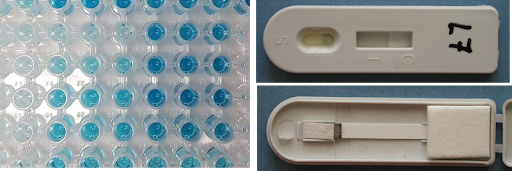
First of all, we are engaged in the development of detection systems for determination of both, high and low molecular substances. These are single or multianalyte immunochemical techniques ELISA (Enzyme Linked Immunosorbent Assay) and LFIA (Lateral Flow Immunoassay), respectively. These methods utilize the existence of non-covalent interactions; mainly between antigen-antibody, biopolymer-solid surface, avidin-biotin and others. In recent years we have been focusing mainly on the application of immunochemical techniques for the detection and determination of environmental contaminants (e.g., pesticides), analytes from clinical biochemistry (e.g., anabolics, drugs), isoflavonoids, microorganisms (Listeria monocytogenes, genus Cronobacter), and their products (enterotoxins, Staphylococcus aureus).
Current projects
Detection of anabolic androgenic steroids (AAS) in food samples

- development of quick and simple methods to reliably detect AAS in food supplements
Anabolic androgenic steroids are synthetic derivatives of testosterone. Nowadays they are used not only in medicine to support medical procedures, but also in sports as illegal doping to support rapid muscle mass growth and overall body strengthening. The free sale of these substances is prohibited, but they may be illegally sold, for example in the form of food supplements, without mentioning it on the packaging label. This behavior is primarily a threat to customers who buy a product without a declared content of anabolics, and therefore use these substances unknowingly.
New Psychoactive Substances Detection (NPS)
- development of immunochemical methods for the detection of synthetic cannabinoids or tryptamines in biological fluids
NPSs are synthesized as structural analogues or chemical derivatives of already controlled substances. This is due to the efforts of manufacturers and distributors to circumvent existing legislative standards in which narcotic drugs and psychotropic substances are usually defined exhaustively.
STUDY OF CRONOBACTER BACTERIA

Another gripping area of our interest are bacteria of the genus Cronobacter, opportunistic pathogens causing life-threatening infections, mainly in newborns and individuals with weakened immunity. We study these microorganisms from their basic properties to their interactions with the host organism. The methods used include a variety of approaches; e.g., isolation and purification of cell fractions and proteins, PCR, RFLP, MLST, mass spectrometry, work with databases and tissue cultures.
Current projects
Investigation of bacteria of the genus Cronobacter
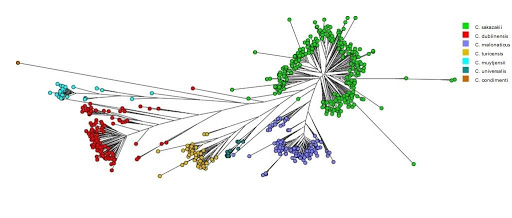
- detailed characterization and accurate identification
Bacteria of the genus Cronobacter are very diverse in their properties and abilities. This diversity has caused a rapid development of their taxonomy and still presents us with new challenges in their accurate identification and classification. We mainly use the methods of molecular biology PCR and MLST and mass spectrometry MALDI-TOF/TOF.
- interspecies variability
Currently, the genus Cronobacter includes seven species. According to the World Health Organization (WHO, 2008), the whole genus is seen as a pathogenic organism, although according to epidemiological studies, C. sakazakii and C. malonaticus are mainly associated with infections. It is therefore interesting to observe the differences in the characteristics and behavior of individual species and try to find connections with the degree of pathogenicity.
- interaction of bacteria of the genus Cronobacter with cell lines
Some virulence factors have been described in the literature, but the process of pathogenesis remains unclear. In particular, protein expression in the host environment is almost non-mapped. Identification of strains capable of adhesion and invasion into human cell lines and monitoring of these interactions would be the first step to the subsequent study of virulent proteins that are expressed directly in the host by the pathogen.
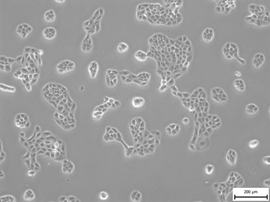
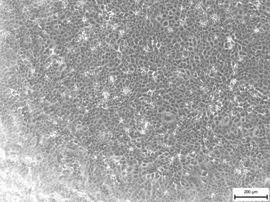
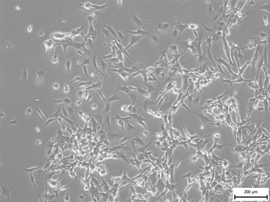
- identification of virulence factors in pathogenic members of the genus Cronobacter
The aim of this part of the work is to find proteins that are unique to pathogenic species. It is very likely that these are virulence factors and their identification would contribute to the understanding and description of the pathogenesis. Furthermore, these proteins could be used for the development of immunochemical methods. These methods excel in speed and low cost and would be a good tool for detecting pathogenic Cronobacter species.
Proteins are isolated from various cell fractions, characterized by SDS-PAGE and identified by LC-ESI-Q-TOF MS. To search for suitable proteins for the immunochemical detection, the immunomagnetic separation is used.
Selected publications
Šuláková, A., Fojtíková, L., Holubová, B., Bártová, K., Lapčík, O., Kuchař, M. Two immunoassays for the detection of 2C-B and related hallucinogenic phenethylamines.: J. Pharmacol.Toxicol 2019, 95, 36-46.
Holubová, B., Mikšátková, P., Kuchař, M., Karamonová, L., Lapčík, O., Fukal, L. (2019): Immunochemical techniques for anabolic androgenic steroid – matrix effects study for food supplements. Eur. Food Res. Technol. 2019, 245, 1011-1019.
Karamonová L., Holubová B., Jelínková A., Novotný J., Svobodová B. Stafylokokové enterotoxiny – superantigeny schopné ošálit imunitní systém. Chem Listy 2019, 113(11), 668-674.
Fojtíková L., Holubová B., Kuchař M., Lapčík O., Maryška M., Šuláková A. Tryptamine derivates having short linking bridge bearing carboxy functional group, and chemical processes for preparing the compounds useful for preparing immunogens by conjugation with the carrier protein. CZ Patentový spis 307719-B6, 2019.
Vlach J, Javůrková B, Karamonová L, Blažková M, Fukal L: Novel PCR-RFLP system based on rpoB gene for differentiation of Cronobacter species. Food Microbiol 2017, 62, 1-8.
Svobodová B, Vlach J, Junková P, Karamonová L, Blažková M, Fukal L: Novel method for the reliable identification of Siccibacter and Franconibacter strains: From ‘pseudo-Cronobacter’ to new Enterobacteriaceae genera. Appl Environ Microbiol 2017, 83(13), e00234-17.
Fojtíková L, Fukal L, Blažková M, Sýkorová S, Kuchař M, Mikšátková P, Lapčík O, Holubová B: Development of enzyme-linked immunosorbent assay for determination of boldenone in dietary supplements. Food Anal Methods 2016, 9(11), 3179-3186.
Svobodová B, Vlach J, Junková P, Karamonová L, Blažková M, Fukal L: Novel method for the reliable identification of Siccibacter and Franconibacter strains: From ‘pseudo-Cronobacter’ to new Enterobacteriaceae genera. Appl Environ Microbiol 2017, 83(13), e00234-17.
Jurášek M, Göselová S, Mikšátková P, Holubová B, Vyšatová E, Kuchař M, Fukal L, Lapčík O, Drašar P: Highly sensitive avidin-biotin ELISA for detection of nandrolone and testosterone in dietary supplements. Drug Test Analysis 2017, 9(4) 553-560.
: Diversity of O-antigens within the genus Cronobacter: from disorder to order. Appl Environ Microbiol 2015, 81, 5574-5582.
: The potential of matrix-assisted laser desorption/ionization time-of-flight mass spectrometry for the identification of biogroups of Cronobacter sakazakii. Rapid Commun Mass Spectrom 2013, 27(3), 409-418.
: Rapid Immunoassays for Detection of Anabolic Nortestosterone in Dietary Supplements. Czech J Food Sci 2013, 31(5), 514–519.
: Immunochromatographic strip test for detection of genus Cronobacter. Biosens Bioelectron 2011, 26(6): 2828-2834. ISSN 0956-5663.
Group members
head of the group:
prof. Ing. Ladislav Fukal, CSc.
assistant professors:
doc.Ing. Barbora Holubová, Ph.D.
Ing. Ludmila Karamonová, Ph.D.
doc. Ing. Martina Krausová, Ph.D.
PhD students:
technician:
Each cell within the body, despite its diverse functions, operates as an autonomous living entity and must effectively manage the resources it possesses. Mammalian cells employ various substrates, such as glucose and fatty acids, to derive energy through oxidation. This energy is then allocated to a range of tasks, including protein synthesis or the transmission of nerve signals. However, within a healthy organism, specialized cells handle energy distinctively. For instance, adipocytes specialize in storing energy substrates for times of scarcity, whereas neurons lack storage capacity and therefore require a continuous energy supply due to their substantial consumption rate. Besides the significant diversity in the functioning of individual cell types, the communication between different cells in the mammalian organism is also fascinating.
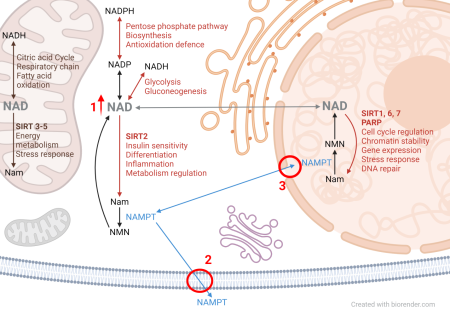
The key molecule in the energy metabolism of all cells is nicotinamide adenine dinucleotide (NAD). The diagram simplifies the main processes that utilize NAD. NAD serves to transfer electrons from redox catabolic reactions to the respiratory chain for energy acquisition. The phosphorylated form of NAD (NADP) is indispensable for biosynthetic pathways. Redox reactions are characterized by converting NAD and NADP between their oxidized and reduced forms, without affecting the overall quantity of these molecules.
However, some reactions consume NAD. The most significant enzymes catalyzing these reactions are the signaling proteins from the sirtuin family (SIRT). Sirtuins deacetylate proteins by transferring the acetyl group onto NAD, releasing nicotinamide (Nam), thereby regulating the function and activity of target proteins, including histones, transcription factors, and enzymes. Sirtuins primarily act in the nucleus, where they regulate gene expression and chromatin stability, but also in the cytosol and mitochondria, where they participate in metabolism regulation.
Another group of enzymes that consume NAD are mono- and poly-ADP-ribosyltransferases (PARP), which covalently modify proteins with an ADP-ribose residue, releasing nicotinamide. This process regulates DNA repair, among other functions. Both redox and non-redox reactions utilize the same pool of NAD, which can become depleted during high sirtuin and PARP activity, leading to cellular energy metabolism collapse and cell death.
NAD replenishment in mammals primarily occurs through the nicotinamide salvage pathway. Initially, Nam combines with phosphoribosylpyrophosphate (PRPP) to form nicotinamide mononucleotide (NMN) via the enzyme nicotinamide phosphoribosyltransferase (NAMPT). NMN then combines with adenosine triphosphate (ATP) to form NAD. This pathway occurs in both the nucleus and cytosol, although it's not precisely understood if it also takes place in mitochondria or how NAD is transported into mammalian cell mitochondria. NAMPT activity determines the rate of the entire biosynthetic pathway and, consequently, the cellular NAD level.
We are a small team of scientists focusing on the study of NAD metabolism, particularly the enzyme NAMPT. We are working on these specific projects:
- The impact of increased NAD levels on the metabolism of healthy and damaged cells. With age, chronic diseases tend to increase while NAD levels decline. By using various precursors or increasing the amount of NAMPT, it may be possible to raise NAD levels. Can boosting NAD levels be used as supportive therapy for chronic diseases such as type 2 diabetes? We are interested in understanding how increasing NAD levels will affect metabolism, gene expression, and the secretory profile of various cell types, with the aim of potentially using NAD precursors in medicine.
- NAMPT secretion. An extracellular form of NAMPT has been described, but it's not clear how this enzyme is secreted from cells or what its role is in extracellular space. We are working to clarify these uncertainties.
- Nuclear transport of NAMPT. NAMPT functions in both the cytosol and the nucleus, and it is present in both compartments. However, it's not clear how NAMPT is transported between the cytosol and the nucleus or how this process is regulated. Our work, which has shown how the transport of NAMPT into the nucleus is related to the cell cycle, has been featured on the cover of the prestigious Journal of Biological Chemistry, and we plan to continue investigating this topic.
Cooperation
- Energy Homeostasis Section, Diabetes, Endocrinology, & Obesity Branch, National Institute of Diabetes and Digestive and Kidney Diseases, NIH, Bethesda, USA.
- Laboratory of Translational and Experimental Diabetology and Obesitology, Institute for Clinical and Experimental Medicine, PragueL
- Laboratory of Integrative Structural Biology, Institute of Experimental Botany of the Czech Academy of Sciences, v. v. i.
- Institute Of Physiology 0f The Czech Academy of Sciences, v. v. i.
- Czech Society for Atherosclerosis
Selected publications:
- Škop V, Guo J, Liu N, Xiao C, Hall KD, Gavrilova O, Reitman ML: The metabolic cost of physical activity in mice using a physiology-based model of energy expenditure. Molecular metabolism. 2023, 71: 101699.
- Vacurova E, Trnovska J, Svoboda P, Skop V, Novosadova V, Reguera DP, Petrezselyová S, Piavaux B, Endaya B, Spoutil F, Zudova D, Stursa J, Melcova M, Bielcikova Z, Werner L, Prochazka J, Sedlacek R, Huttl M, Hubackova SS, Haluzik M, Neuzil J: Mitochondrially targeted tamoxifen alleviates markers of obesity and type 2 diabetes mellitus in mice. Nature communications 2022, 13(1):1866.
- Škop V, Guo J, Liu N, Xiao C, Hall KD, Gavrilova O, Reitman ML: Mouse thermoregulation: introducing the concept of the thermoneutral point. Cell reports 2020, 31(2):107501.
- Svoboda P, Krizova E, Sestakova S, Vapenkova K, Knejzlik Z, Rimpelova S, Rayova D, Volfova N, Krizova I, Rumlova M, Sykora D, Kizek R, Haluzik M, Zidek V, Zidkova J, Skop V.: Nuclear transport of nicotinamide phosphoribosyltransferase is cell cycledependent in mammalian cells, and its inhibition slows cell growth. Journal of Biological Chemistry 2019, 294(22):8676-8689.
- Svoboda P, Křížová E, Čeňková K, Vápenková K, Zídková J, Zídek V, Škop V: Visfatin is actively secreted in vitro from U-937 macrophages, but only passively released from 3T3-L1 adipocytes and HepG2 hepatocytes. Physiological Research 2017, 66(4):709-714.
- Skop V, Cahova M, Dankova H, Papackova Z, Palenickova E, Svoboda P, Zidkova J, Kazdova L: Autophagy inhibition in early but not in later stages prevents 3T3-L1 differentiation: Effect on mitochondrial remodeling. Differentiation 2014, 87(5):220-229.
Team members
head of the group:
Ing. Vojtěch Škop, Ph.D.
assistant professors:
Ing. Petr Svoboda, Ph.D.
Ing. Nikola Vrzáčková, Ph.D.
Specialist and technician:
Ing. Magdalena Melčová, Ph.D.
We are still working on this site...
[urlnadstranka] => [ogobrazek] => [pozadi] => [poduzel] => Array ( ) [iduzel] => 77306 [canonical_url] => [skupina_www] => Array ( ) [url] => /research/research-groups/food [sablona] => stdClass Object ( [class] => stranka [html] => [css] => [js] => [autonomni] => 1 ) ) [73407] => stdClass Object ( [nazev] => Laboratory of Fungal Genetics [seo_title] => Laboratory of Fungal Genetics [seo_desc] => [autor] => [autor_email] => [obsah] =>Home Projects Publications
Our laboratory group is dedicated to the exploration of all aspects related to fungal genetics, ranging from the investigation of unknown genes in yeast mutant models, to the study of gene expression in fungal mycelia, and even the production of natural secondary metabolites in fungi. To achieve these objectives, we employ a broad spectrum of bioinformatic and molecular biology laboratory techniques, including polymerase chain reaction, blue-white screening, cDNA library construction, Genome Walking, cloning of unidentified genes into yeast mutants, and the isolation of proteins through metal-affinity methods. Furthermore, we collaborate closely with other scientific groups at the University of Chemistry and Technology Prague (VŠCHT Praha) and the Czech Academy of Sciences (AV ČR).
[urlnadstranka] => [ogobrazek] => [pozadi] => [poduzel] => stdClass Object ( [73408] => stdClass Object ( [nazev] => [barva_pozadi] => cervena [uslideru] => false [text] =>Head of the group:
Ing. Jan Sácký, Ph.D.
Ing. Tereza Leonhardt, Ph.D.
Technician:
Bc. Barbora Nováková
Ph.D. students:
Ing. Jan Šnábl
Mgr. students:
Bc. Barbora Sommerová
Bc. Alina Murtazina
Bc. students:
Anna Buková
Home Projects Publications
Genes Associated with Metal Accumulation
The ability of fungi to accumulate significant amounts of metal elements in their fruiting bodies has been recognized for several decades. However, the precise mechanism behind this intriguing phenomenon remains unknown. In the Fungal Genetics Laboratory, we are dedicated to the identification and characterization of genes responsible for the accumulation of metal elements (Ag, Cd, Cu, Zn, and others) in the fruiting bodies of saprotrophic and mycorrhizal fungi. Our research also includes the cultivation of fungal cultures, comprising over twenty strains isolated from hyperaccumulating genera such as Amanita, Hebeloma, Agaricus, and others. This allows us to study both in vitro and in vivo scenarios, including the use of fluorescence microscopy.
Arsenic Transformation in Fungi
Arsenic is a highly toxic and carcinogenic metalloid that exists in both inorganic and organic forms in the environment, with inorganic forms of arsenic being more toxic to organisms than their organic counterparts. The phenomenon of arsenic accumulation and the formation of arsenic compounds in the fruiting bodies of fungi has previously been studied by our partner institution in Graz, Austria. It was discovered that fungal fruiting bodies contain diverse inorganic and organic forms of arsenic, some of which are yet unidentified. Our goal is to identify these unknown compounds and the metabolic pathways responsible for their formation and transformation. In pursuit of this and other research projects, we collaborate with Associate Professor Antonín Kaňa from the Institute of Analytical Chemistry.
Identification of Bacterial Communities in Fungal Fruiting Bodies and The Mycosphere
While our primary focus lies in the realm of metals within fungal fruiting bodies and the associated genes and proteins, the question of comprehensively understanding the ‘absurd’ hyperaccumulation of metals in these structures has led us to investigate microbial communities, or microbiomes, using next-generation sequencing methods. We investigate whether bacterial communities residing in close proximity to fruiting bodies, or within mycelium, differ from communities inhabiting the same location but without direct contact with the fungus.
Drug Metabolism Testing with Filamentous Fungus Cunninghamella elegans
Filamentous fungus Cunninghamella elegans is considered a breakthrough in metabolism testing of various toxic compounds, including drugs, as it possesses an enzyme repertoire similar to that of animal livers. As such, it can be employed not only for basic research to predict metabolites of new synthetic drugs but also for the production of bioactive compounds. We collaborate with organic chemists and chemical analysts from the BAFA laboratory, and together with Associate Professor Michal Kohout, we investigate whether chiral compounds undergo chiral metabolism within the fungus.
Genes Associated With Psilocybin Production
We are still working on this site ...
[urlnadstranka] => [ogobrazek] => [pozadi] => [poduzel] => Array ( ) [iduzel] => 77307 [canonical_url] => [skupina_www] => Array ( ) [url] => /research/research-groups/immuno [sablona] => stdClass Object ( [class] => stranka [html] => [css] => [js] => [autonomni] => 1 ) ) [53010] => stdClass Object ( [nazev] => Laboratory of Metallomics and Heavy Metal Bioremediation [seo_title] => Laboratory of Metallomics and Heavy Metal Bioremediation [seo_desc] => [autor] => [autor_email] => [obsah] =>Fungi play an important role in the ecosystem, cycling carbon and micronutrients and many even entering symbiotic relationships with plants. This can be of utmost importance for the optimization of plant growth, as research shows that mycorrhizal plants greatly benefit from the mycorrhiza due to a much larger root system and thus increased access to water and micronutrients and supposedly diminished stress from pathogens and heavy metal stress.
Our research group focuses on heavy metal speciation in the sporocarps and mycelia of ectomycorrhizal fungi. We are especially interested in the so called hyperaccumulators, i.e. fungal species that accumulate extraordinary amounts of heavy metals, sometimes even multiple elements at once. Hyperaccumulating taxons are first discovered by measuring the total amount of metals in sporocarps from pristine and polluted habitats acquired by our collaborator Jan Borovička. If a hyperaccumulating taxon is confirmed, further molecular and biochemical analyses are performed to elucidate the biochemical background of the metal speciation (metallothioneins, compartmentalization, novel metalloproteins) and then the genetic determinants responsible for the hyperaccumulating phenotype. Our collection comprises of over twenty hyperaccumulating fungal species in the form of mycelial explants, including Amanita, Hebeloma, and Agaricus sp. This gives us a unique opportunity to study the effects of heavy metal overload and poisoning on these organisms both in vitro and in vivo.
Our other collaborative projects include speciation and transformation of arsenic in arsenic hyperaccumulators and discovering novel fungal proteins and compounds with potential technological and medicinal importance.
Current projets
Speciation of cadmium, zinc and copper in sporocarps and mycelia of fungi of the species Russula, Hebeloma, Amanita muscaria, Cystoderma carcharias, Agaricus crocodilinus – besides classic biochemical approach for the identification of metal species, we are also relying on the available public genomic sequences in which we can reveal relevant protein sequences by bioinformatic analysis and then isolate the genes coding for these proteins by homology cloning or by construction of RACE and Genome walking libraries.
Identification of bacterial communities in sporocarps and in the mycosphere – although our main field of interest are metals in fungal sporocarps, and the genes and proteins related to metal metabolism, the question of why the metal hyperaccumulation trait has evolved in fungi has lead us to the study of microbial communities, so called microbiomes, by NGS methods. Our goal is to elucidate if the bacterial communities living in the proximity of sporocarps and mycelia are different from bacterial communities living at the same locality but without a contact with the fungus.
Preparation of chiral compounds by Cunninghamella elegans – this fungus is considered very interesting for the testing of the metabolism of toxic compounds, since the enyzmatic apparatus of the fungus is similar to that of animal hepatocytes. This can be used for the prediction of metabolites of new synthetic drugs or even production of novel bioactive compounds. Currently, we are cooperating with Dr. Michal Kohout, testing if the fungus is able to keep or change the chirality of the tested compounds.
Identification of novel aluminium complex in mycelia of Oidiodendron sp. – an isolate of an unknown species of this ericoid mycorrhizal fungus was brought to us from Poland. After metal tolerance screening, it was shown that the fungus is multitolerant to many metals, including aluminium. Currently we are investigating the form of aluminium stored within the cells, including using fluorescence microscopy with an aluminium probe, and transmission electron microscopy with energy dispersive spectroscopy to determine the exact place of the Al complexes within the fungal cells.
Identification of novel cadmium complexes in sporocarps of Agaricus crocodilinus – literature search revealed an interesting article from 1983, in which German scientists found a cadmium complex with high amounts of saccharides but no sulfur amino acids, which is strange, considering cadmium has been mostly found to bind with proteins containing sulfur. This complex was called “mycophosphatin” and our goal is to isolate it and describe its biochemical properties.
Isolation and characterization of biomolecules from sporocarps and mycelia of Amanita muscaria – this fungus belongs to mildly poisonous species. Its habitat extends over the whole northern hemisphere and besides being poisonous it has been known for being psychotropic, and thus it is used in traditional shaman rituals and as a recreational drug. In our collaboration with the BAFA lab, we are investigating the potential for novel medicinal use of A. muscaria.
Speciation of arsenic in the ink stain bolete, Cyanoboletus pulverulentus – this edible fungus was studied previously by our collaborators at Graz University in Austria. Their research yielded information about very high amounts of arsenic and potentially novel arsenic species. Our goal is to identify potential novel species and to study the metabolic pathways that lead to the formation of these species both in laboratory and in the environment. This project is done in collaboration with Department of Analytical Chemistry.
[submenuno] => 1 [urlnadstranka] => [ogobrazek] => [pozadi] => [poduzel] => Array ( ) [iduzel] => 53010 [canonical_url] => [skupina_www] => Array ( ) [url] => /research/research-groups/metal [sablona] => stdClass Object ( [class] => stranka [html] => [css] => [js] => [autonomni] => 1 ) ) [52684] => stdClass Object ( [nazev] => Laboratory of Microbial Ecology [seo_title] => Laboratory of Microbial Ecology [seo_desc] => [autor] => [autor_email] => [obsah] =>Home Projects Publications
The tremendous diversity of microorganisms is not only astonishing; it is also a key to understanding how organisms evolve and adapt to various environmental conditions. The metabolic activity of microorganisms is essential for maintaining the functions of all ecosystems in the biosphere. Microbial ecology seeks to unveil microorganisms in their natural environments; it looks at how microbes interact with one another and their environment, and what the consequences of these interactions are for ecosystem functions.
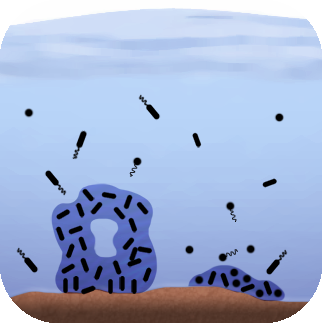 In the Laboratory of Microbial Ecology, we are interested in uncovering some of the hidden gems of microbial diversity. Certain localities of the Czech Republic are very interesting from the microbial ecological point of view; being extreme (brine, radioactive), often unique, spatially isolated biotopes, they are a promising source of hitherto undiscovered microbial diversity. Such habitats include mineral water springs which are used for healing purposes in Karlovy Vary, Jáchymov or Luhačovice, or soils and mofettas from the Soos National reserve. Our objective is to analyze microbial communities in these habitats and understand their physiology, biochemistry and ecology.
In the Laboratory of Microbial Ecology, we are interested in uncovering some of the hidden gems of microbial diversity. Certain localities of the Czech Republic are very interesting from the microbial ecological point of view; being extreme (brine, radioactive), often unique, spatially isolated biotopes, they are a promising source of hitherto undiscovered microbial diversity. Such habitats include mineral water springs which are used for healing purposes in Karlovy Vary, Jáchymov or Luhačovice, or soils and mofettas from the Soos National reserve. Our objective is to analyze microbial communities in these habitats and understand their physiology, biochemistry and ecology.
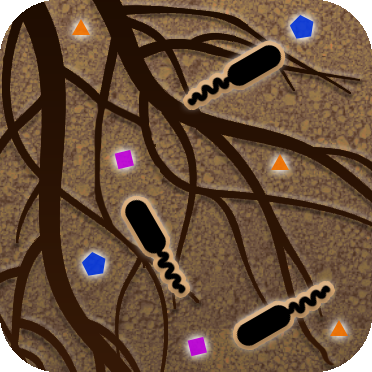 No less important to us is improving our understanding of plant-microbe interactions. We look at how secondary plant metabolites shape soil microbial community structure and how they induce and/or regulate biodegradative genes in soil bacteria, thereby increasing the contaminant biodegradation potential in the microbial community. In turn, we are looking at how rhizosphere microorganisms promote the growth of plants. At the same time, we are looking at how many and which of these microorganisms colonize the interior of the plants, thus becoming endophytic. The applications of this fundamental research mainly include sustainable agriculture or environmental protection.
No less important to us is improving our understanding of plant-microbe interactions. We look at how secondary plant metabolites shape soil microbial community structure and how they induce and/or regulate biodegradative genes in soil bacteria, thereby increasing the contaminant biodegradation potential in the microbial community. In turn, we are looking at how rhizosphere microorganisms promote the growth of plants. At the same time, we are looking at how many and which of these microorganisms colonize the interior of the plants, thus becoming endophytic. The applications of this fundamental research mainly include sustainable agriculture or environmental protection.
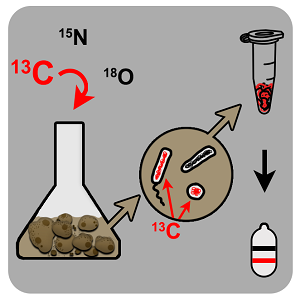 We identify metabolically active microbial populations in the context of their environments without the need for their cultivation. Microorganisms whose activity is crucial for a particular bio(geo)chemical process in the ecosystem are often not very abundant in the community. Therefore, we use microbial ecological techniques that allow linking community members with specific functions, including Stable Isotope Probing (SIP) or epicPCR. We thereby identify microorganisms degrading contaminants from the soil, promoting plant growth, etc.
We identify metabolically active microbial populations in the context of their environments without the need for their cultivation. Microorganisms whose activity is crucial for a particular bio(geo)chemical process in the ecosystem are often not very abundant in the community. Therefore, we use microbial ecological techniques that allow linking community members with specific functions, including Stable Isotope Probing (SIP) or epicPCR. We thereby identify microorganisms degrading contaminants from the soil, promoting plant growth, etc.
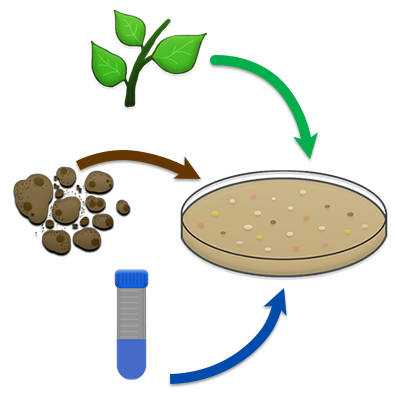 We are also aware of the importance of pure culture in microbiology. Therefore, we are trying to modify standard extraction and cultivation procedures in order to increase the efficiency of culturing of microorganisms, be it from soil, water, plant interior or any other habitat. Resuscitation factors or signaling molecules can help us to do so, along with mimicking the conditions of natural environments in which our microbes thrive. Upon successful isolation, the novel pure cultures are classified and characterized.
We are also aware of the importance of pure culture in microbiology. Therefore, we are trying to modify standard extraction and cultivation procedures in order to increase the efficiency of culturing of microorganisms, be it from soil, water, plant interior or any other habitat. Resuscitation factors or signaling molecules can help us to do so, along with mimicking the conditions of natural environments in which our microbes thrive. Upon successful isolation, the novel pure cultures are classified and characterized.
In order to reach our goals, we try to apply cutting-edge methodologies and techniques, including metataxonomics, metagenomics, stable isotope probing as well as modified culturing approaches. If you are interested in more details on our research, see our current projects.
We are a group of enthusiastic, motivated and hardworking microbial ecologists. If you are a motivated and diligent student who is eager to do solid research, do not hesitate to contact us.
[urlnadstranka] => [ogobrazek] => [pozadi] => [poduzel] => stdClass Object ( [54377] => stdClass Object ( [obsah] => [iduzel] => 54377 [canonical_url] => [skupina_www] => Array ( ) [url] => [sablona] => stdClass Object ( [class] => slider [html] => [css] => [js] => [autonomni] => 0 ) ) [52688] => stdClass Object ( [nazev] => [barva_pozadi] => zluta [uslideru] => false [text] =>“Once ecological mechanisms are understood, ecologists strive to better predict, conserve or manage communities to desired outcomes.”
(Ashley Shade, ISME J 2017; 11, 1–6)
[iduzel] => 52688 [canonical_url] => [skupina_www] => Array ( ) [url] => [sablona] => stdClass Object ( [class] => infobox [html] => [css] => [js] => [autonomni] => 0 ) ) [54375] => stdClass Object ( [nazev] => [barva_pozadi] => seda [uslideru] => false [text] =>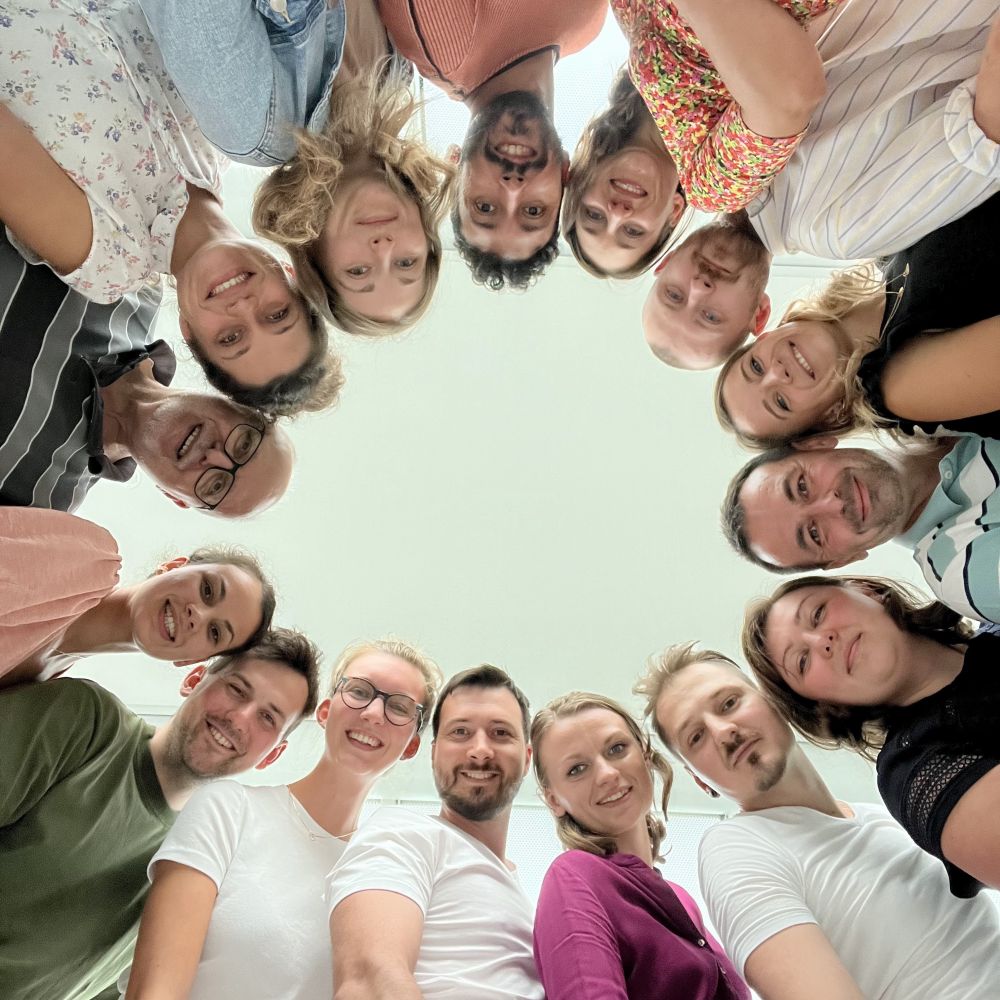
head of the group
assistant professors
postdoc
Ana Catalina Lara Rodriguez, Ph.D.
PhD students
professor
[iduzel] => 54375 [canonical_url] => [skupina_www] => Array ( ) [url] => [sablona] => stdClass Object ( [class] => infobox [html] => [css] => [js] => [autonomni] => 0 ) ) [52685] => stdClass Object ( [nazev] => Laboratory of Microbial Ecology [seo_title] => Laboratory of Microbial Ecology [seo_desc] => [autor] => [autor_email] => [obsah] =>Home Projects Publications
The main research interests of the Laboratory of Microbial Ecology can be divided into four subsections:
First, we are looking into the ecology of plant-microbe interactions. We are working under the hypotheses that secondary plant metabolites (SPM), including lignin degradation intermediates and other phenolics as well as terpenes, significantly affect the biodegradation potential of soil microbial communities. We also predict that biodegradative functions, originally evolved for SPM degradation, and plant-growth promoting functions are often attributed to the same plant-associated microbial populations. We hypothesize that this functional association helps the plant to selectively enrich microbial populations which promote its growth through SPM exudation. At the same time, SPMs indirectly help the plant thrive in contaminated soil by increasing the biodegradation potential of soil microbial communities.
Second, we are looking into the microbial ecology of geologically unique biotopes. We are working under the hypotheses that microorganisms found in these biotopes will be unique from many points of view – phylogenetically with respect to as-yet-undetected taxa, metabolically with respect to the production of biologically active compounds, and ecologically with respect to unusual life strategies and interactions. We also predict that cutting-edge microbial ecological techniques, specifically targeted metagenomic, metagenomic/metatranscriptomic and metabolomic approaches, will enable us to decipher the microbial ecology of these biotopes.
Third, we identify metabolically active microbial populations in the context of their environments without the need for their cultivation. We use techniques such as Stable Isotope Probing (SIP) or epicPCR for these purposes.
Fourth, we are looking into how to modify standard extraction and cultivation procedures in order to increase the efficiency of culturing of microorganisms. This work relates to all of the above-mentioned research areas.
Our research is carried out under the following grant projects:
- Exelent research – OP JAK, INTER-MICRO, Talking microbes - understanding microbial interactions within One Health framework
- European Commission Grant 101060625, NYMPHE, New system-driven bioremediation of polluted habitats and environment
- Hidden Gems of Microbial Diversity: Geothermally Heated Groundwaters as a Source of Phylogenetically Novel and Metabolically Rare Prokaryotes (Czech Science Foundation grant no. 25-15226S). Geothermally heated groundwater has attracted the attention of microbiologists for decades due to its unique chemical and thermal profiles. Analyses of these unique ecosystems have identified many novel clades in the tree of life, both bacterial and archaeal in origin. Although western Bohemia hosts many curative thermal springs that are considered national treasures, their microbial life remains virtually unstudied. Our preliminary analyses have revealed the tremendous microbial diversity of these unique ecosystems, far exceeding expectations in terms of both phylogenetic and functional/metabolic novelty. In this project, we aim to improve our understanding of the genetic basis of the radioresistance of isolated pure cultures, provide a deeper understanding of the enzymatic activities of the pure cultures at temperature and salt extremes, taxonomically classify and characterize phylogenetically novel isolates, and most importantly, explore novel prokaryotic lineages and their metabolic potential, phylogeny, and ecology.
- Life at the Interface: Ecology of Plant-Associated Microorganisms (Czech Science Foundation grant no. 22-00132S). Given their intertwined evolutionary history and close environmental proximity, plants and microorganisms have developed extensive interactions which are essential for ecosystem functioning. Our goal is to improve our mechanistic understanding of the ecology of plant-associated microorganisms and to explore some of the mechanisms driving processes that are enabled by plant-microbe interactions. More specifically, we aim to elucidate the role of rhizodeposit components in structuring soil microbial communities, determine the extent to which roots impact soil microbial populations, including the assembly of plant-associated microbial communities, as well as reveal the specific role of rhizodeposits in selecting soil bacteria with plant-growth-promoting traits to be recruited for endophytic mutualism. Results of this project should significantly advance our understanding of plant-microbial interactions, having potential implications for plant health and important ecosystem functions, such as horticultural plant growth promotion, environmental restoration and others.
- Who is responsible here? Linking transformation of organochlorines with specific bacterial
populations (Czech Science Foundation grant no. 22-00150S). Organochlorines (OCs), such as chlorinated ethenes and polychlorinated biphenyls, still constitute an important environmental problem due to actual and/or potential contamination of soils or drinking water sources. Although microbial degradation of OCs has been extensively studied, there is paucity of knowledge about the distribution of OC degradation genes at contaminated sites and their link to phylogenetic information in individual taxa. In this project, we aim to understand patterns in the distribution of vital biodegradative functions and the phylogenetic origin of bacteria that perform these functions. Specifically, our main objectives are to: reveal patterns in the distribution of selected OC degradation (bphA and rdhA) genes in indigenous communities at contaminated sites and their link to phylogeny; investigate the contribution of extrachromosomal DNA to the distribution of OC degradation genes in the environment; elucidate the capability of bacterial consortia to adapt to elevated concentrations of OCs by up-regulation and dissemination of particular genes. - Genome dynamics and maintenance in simple and homogeneous natural prokaryotic communities (in collaboration with Faculty of Science of the Charles University, Czech Science Foundation grant no. 23-06568S) Simple and spatially and genetically clearly defined microbial populations represent an optimal model for the study of prokaryotic population genetics. The bacterium Ferrovum myxofaciens from mine biostalactites perfectly meets these criteria. Our previous research has shown that the F. myxofaciens genomes have almost identical gene content but there is significant intrapopulation variability in the distribution of mobile elements and short polymorphisms. This variability probably serves for life strategy diversification or adaptation to different microniches. In this project, we analyze a larger number of better characterized populations from multiple localities which will allow a functional interpretation of their variability. The influence of different genetic variants on the biological properties of F. myxofaciens are be verified on pure cultures derived from natural populations. These analyses may provide new insights into the function of mobile elements and the role of local disruptions of intraspecific gene flow in the formation of prokaryotic populations.
Previous grant projects:
- Ecological functions of soil microorganisms governed by secondary plant metabolites (Czech Science Foundation grant no. 20-00291S). A vast source of SPMs in soils is lignin, a complex ubiquitous plant biopolymer composed of phenylpropanoid monomers. Structural similarity of SPMs, including lignin degradation intermediates, to known anthropogenic pollutants might explain why anthropogenic pollutants can be cometabolized in the presence of SPMs. In this proposed project we will test the hypotheses (i) that SPMs as original evolutionarily substrates of biodegradative enzymes significantly affect the biodegradation potential of soil microbial communities; and (ii) that biodegradative functions, originally evolved for SPM degradation, and plant-growth promoting functions, which are often attributed to the same plant-associated microbial populations, together help the plant to selectively enrich microbial populations which promote its growth through SPM exudation.
- Microbial Cometabolism: Promoting Biodegradation of Pollutants (Ministry of Education, Youth and Sports of the CR grant no. LTAUSA19013). The objective of the project is to test the hypothesis that secondary plant metabolites can promote cometabolism of persistent organic pollutants in the environment and thereby significantly influence the biodegradation potential of autochthonous microbial communities. In order to accomplish this objective, we (i) selectively enrich soil bacterial consortia that degrade selected pollutants (polychlorinated biphenyls, PCBs, and polyaromatic hydrocarbons, PAHs) when grown on secondary plant metabolites and (ii) test whether the consortia involved in secondary plant metabolite metabolism increase the efficiency of biodegradation of PCBs and PAHs in soils.
- Microbiomes of Selected Extreme Biotopes – Their Phylogenetic Diversity and Functional Potential (Ministry of Education, Youth and Sports of the CR grant no. LTAUSA19028). The objective of the project is to characterize microbial populations in extreme biotopes – chronosequence of permafrost (permafrost of differing age) from central Alaska, and soils from salt marshes and moffettes of the Soos National Natural Reserve, Czech Republic. The characterization is conducted by two major routes – metagenomics and modified cultivation techniques. The basic modification of the cultivation techniques is the use of resuscitation-promoting factor and adjustment of cultivation media so that they better mimic natural conditions the bacteria are subjected to in their habitat; the goal is to increase the efficiency of the cultivation and isolate dormant or otherwise difficult-to-culture or, if possible, as-yet-uncultured bacteria.
- Ecology of extremophilic microorganisms in Czech spring waters of cultural heritage significance (Czech Science Foundation grant no. 18-00036S). There is a diverse range of deep springs in the Czech Republic, each of which, whether hot, radon or brine, is characterized by an extreme, yet stable and unique, environment that has enabled its indigenous microorganisms to evolve for thousands of years. We therefore hypothesize that microorganisms found in these waters will be unique from many points of view – phylogenetically with respect to as-yet-undetected taxa, metabolically with respect to the production of biologically active compounds, and ecologically with respect to unusual life strategies and interactions. We also predict that cutting-edge microbial ecological techniques, specifically targeted metagenomic, metatranscriptomic and metabolomic approaches, will enable us to decipher the microbial ecology of these waters.
Home Publications
1) Virology
In the field of virology, which deals with the study of the structure and biology of viruses and their pathogenesis, we focus mainly on retroviruses and, more recently, in cooperation, also on flaviviruses. Both Retrovirideae and Flaviviridae are enveloped RNA viruses. The aim of our research is to clarify selected steps in the life cycle of viruses, focusing mainly on the late phase of viral infection. Understanding the molecular nature of these steps might open the possibility of developing new types of drugs. Using molecular biological methods, we study the structure of viral proteins, the functional significance of their structural domains, their mutual interactions, interactions with RNA and membranes and the transport of viral proteins and whole particles in an infected cell. We also study the structure and mechanism of formation of mature and immature retroviral particles.
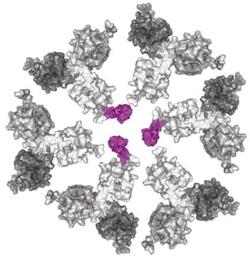

2) Medicinal chemistry: Theranostics and multimodal therapy
Natural products are the basis of clinical therapy for cancer and other diseases. Their therapeutic effects can be modified with chemical derivatization in order to reduce unwanted side effects, increase cytotoxicity and selectivity towards pathological cells, change their mechanism of action, etc. In our research group, we mainly focus on basic research of toxicity and mechanism of action of novel antimitotic derivatives (e.g., colchicine and paclitaxel), inhibitors of sarco-/endoplasmic reticular Ca2+-ATPase (e.g., thapsigargin and trilobolide) and cardiac glycosides (e.g., digitoxin and digoxin). Most of the derivatives we study are developed with the aim to be utilized in multimodal and combination therapy as well as theranostics of cancer. Theranostics is based on diagnostic and therapeutic properties combined in one molecule, which often consists of a natural product conjugated to a fluorescent moiety.
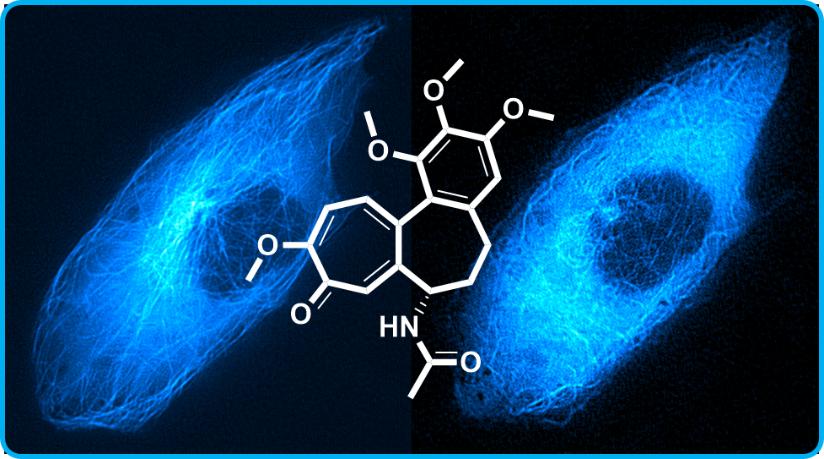
3) Cytocompatible and antimicrobial materials for research and medicinal applications
Another research topic addressed by our scientific group is the study of tailor-made polymers and metallic materials for medical applications for soft and hard tissue replacements, but also for research purposes (e.g., single cell cultivation and analysis). The aim of this research is to develop novel possibilities for functional replacement of damaged tissues but also to understand the basic mechanisms of cell-cell and cell-material interactions in dependence on its nano- and microstructured topology. We focus on evaluation of material cytocompatibility, cytotoxicity and antibacterial properties using cell biological and microbiological methods. Moreover, methods of molecular biology are utilized to study the mechanism of cell adhesion, interaction of cells with materials at the molecular level, and cell differentiation.

4) Photodynamic therapy and molecules for photoimaging
Photodynamic therapy is a non-invasive therapy using special molecules that, when activated by light, produce highly reactive oxygen species applicable for the eradication of tumors, microorganisms, or the treatment of skin diseases. We collaborate on the development of advanced photoactive molecules and study the molecular mechanisms of their action and localization in living tumor cells in real time. We focus on these aspects in the study of the effectiveness of photoactive molecules including both inorganic materials (e.g., molybdenum clusters) and organic molecules (e.g., porphyrins, phthalocyanines, halogenated BODIPY). In addition, we focus on the development of novel fluorescent probes for imaging techniques, which are an indispensable tool for medicine and molecular biological research. Fluorescence probes allow us not only to visualize and study different cellular structures, but also to reveal the molecular basis of various diseases. Our goal is to eliminate the limitations of available probes, such as high toxicity, low specificity or insufficient photophysical properties. We use both common and highly specialized fluorescence microscopy methods (SIM, PALM / STORM) to evaluate these probes.
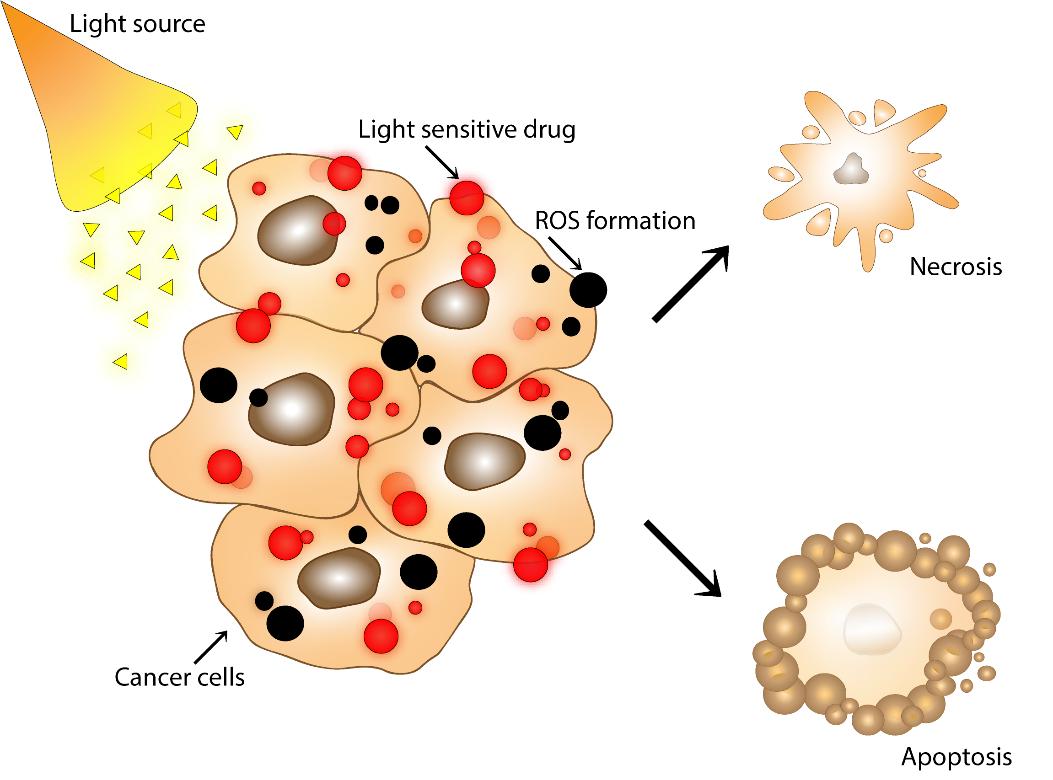
5) Biologically active substances
We study the properties of plant extracts or isolated compounds with a focus on both beneficial effects and possible negative effects. Our goal is to identify biologically active substances and characterize their beneficial effects while excluding possible toxicological effects. Special emphasis is placed on biologically active substances with the ability to modulate multiple drug resistance.
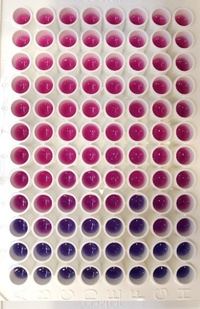
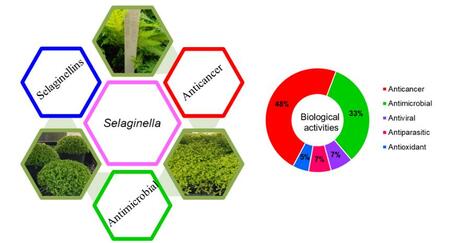
Home Publications
Metallic materials for orthopaedic applications
When developing novel biomaterials for orthopaedic applications, the goals to reach are: suitable mechanical properties, antibacterial effect and the ability of material to accelerate healing. Another direction is the development of degradable metallic materials for temporary applications, which would mean no need of reoperation. Novel biomaterials developed by our co-operators must be first tested and approved. Our group deals with first stage of biomaterials testing using cell cultures and relevant methods..
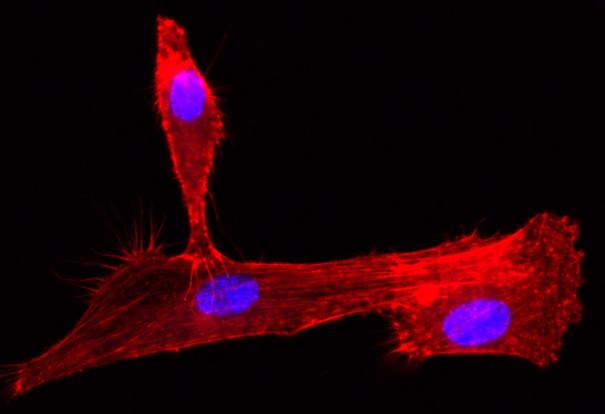
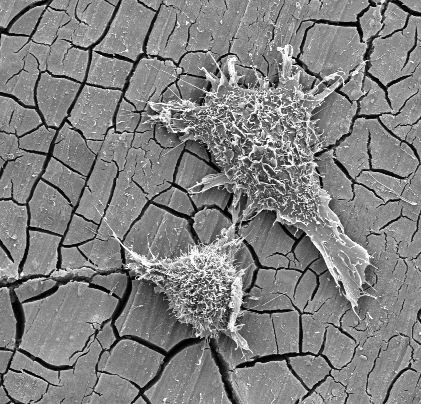
Human immortalized stem cells derived from adipose tissue grown on a titanium alloy with nanotubular surface modification (nuclei in blue, actin filament in red); Electron-microscopic image of murine fibroblasts grown on degradable magnesium alloy (magnification 2000 x)
The methods we use
We determine corrosion rate in biological media under physiological conditions, we test in vitro cytotoxicity of biomaterials according to ISO 10993-5 (elution test followed by determination of metabolic activity by resazurin assay) and we examine colonisation of material’s surfaces using microscopic techniques (using fluorescence as well as scanning electron microscopy). We use murine fibroblasts and cell lines derived from human bone tissue as cell models. We also test antibacterial properties of the biomaterials.
Contact
Ing. Eva Jablonská, Ph.D.
Ing. Zdeněk Míchal
doc. Ing. Jan Lipov, Ph.D.
prof. Ing. Tomáš Ruml, CSc.
Publications
Cooperation
- The Department of Metals and Corrosion Engineering , UCT Prague
- The Department of Glass and Ceramics , UCT Prague
- Department of Physics of Materials, Faculty of Mathematics and Physics, Charles University
- The Institute of Physics, ASCR
REDOX Lab
[ikona] => [obrazek] => 0003~~884vyExVyEs801hWlFGq4I3KDUpNUajQNQYA.png [ogobrazek] => 0003~~88lPz1fITcxJPdOoYAQA.png [pozadi] => 0007~~8803i3fLzEvMySwuAQA.png [obsah] =>We are glad to welcome you to our laboratory page!
We are a friendly and open laboratory that focuses on the topics of oxidative stress, antioxidants and redox signalling in fields related to human health. We research in microbiology, cell biology, biochemistry, chemical biology and materials science.
What is our goal?
We are engaged in a mixture of basic and applied research to understand the mechanisms of various diseases and then to find new smart approaches to prevent and treat them. We collaborate with experts in other departments, including physicists, chemists, materials scientists, physiologists and physicians.
What can you find here?
We'll keep you up to date on the exciting things we're up to - our latest projects, findings and maybe even behind the scenes. But it's not just about our work in the lab. We also share a lot of our knowledge. You'll find educational materials, fun facts and some tips for budding scientists on our sites. We're all about spreading the love of science far and wide.
So bookmark this page, follow us on social media and join us on this wild ride through a fascinating world of ![]() . If you've got questions or just want to say hi, drop us a line - we'd love to hear from you.
. If you've got questions or just want to say hi, drop us a line - we'd love to hear from you.
WE ARE DEALING WITH
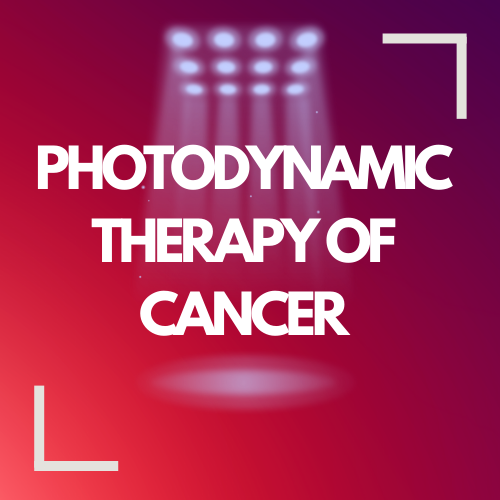 |
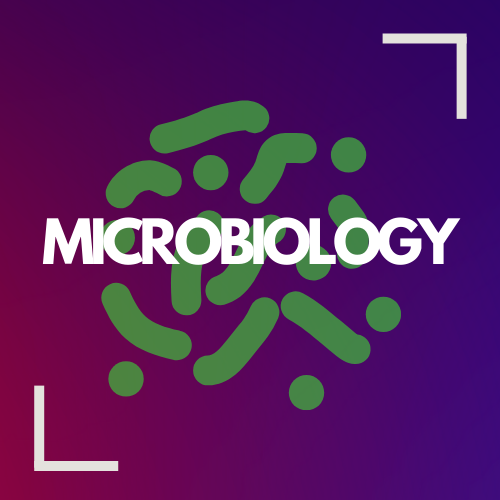 |
 |
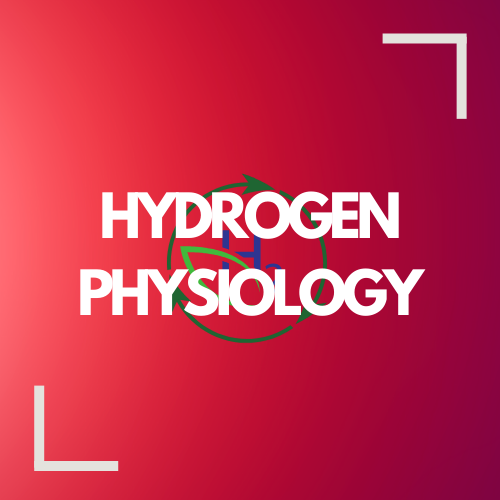 |
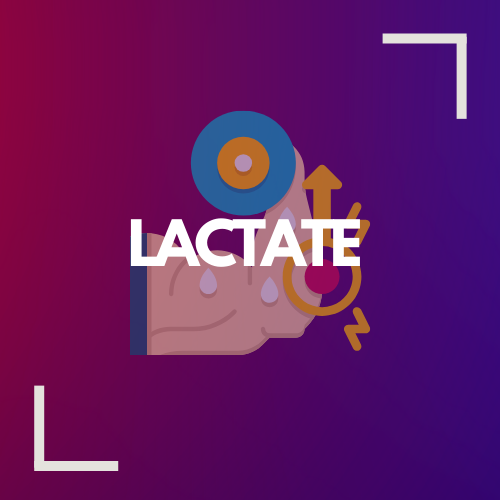 |
 |

prof. Ing. Tomáš Ruml, CSc.
Tel: +420 220443022
Email: tomas.ruml@vscht.cz
ORCID iD: 0000-0002-5698-4366
EDUCATION
| 1984 | PhD. in Biological Sciences at the Prague Institute of Chemical Technology (Study of thiamine excretion in mutants of Saccharomyces cerevisiae) |
| 1973–1978 | M.S. Institute of Chemical Technology, Prague (Dept. Fermentation Technology and Bioengineering, diploma thesis: Physiological characteristics of Candida utilis growing on ethanol) |
WORK EXPERIENCE
| 09/2021 | President for Internationalization, UCT Prague |
| 2013-2020 | Head of the Department of Biochemistry and Microbiology, UCT, Prague |
| 2012–2019 | Dean of the Faculty of Food and Biochemical Technology; UCT, Prague |
| 2009-2011 | Vice rector for International affairs, UCT, Prague |
| 2006-2009 | Vice rector for R&D, Faculty of Food and Biochemical Technology; UCT, Prague |
| 2002 | professor, Department of Biochemistry and Microbiology, UCT, Prague |
| 1996 | associated professor, Department of Biochemistry and Microbiology, UCT, Prague |
| 1984 | assistant, Department of Biochemistry and Microbiology, UCT, Prague |
FOREIGN STUDY STAYS
University of Alabama at Birmingham - virology (two years: 1989-1991), 1994 (3 months), 1996 (3 months), 1998 (3 months); City College New York 1993 (3 months)
ORGANIZATIONAL ACTIVITIES
Main organizer of world Retrovirus Assembly Meetings: 14.-18. October 2000, 2.-6. October 2004 and 4.-8. October 2008 in Prague, co-organizer of two The FEBS Congresses, and 5 other congresses.
MAJOR RESEARCH ACTIVITES
Structures, interactions, targeting and assembly of retroviral proteins. Developed a fundamental method for in vitro assembly of retroviral particles, which represents a basic technology used in numerous prestigious laboratories worldwide.
Activity of molecules and nanoparticles for photodynamic therapy.
Biological effects of molecules and materials on human cells.
Bioprospection – analysis of medicically beneficial effects of marine and plant resources.
Principal Investigator (PI) or co-PI of 35 national and 4 international grants.
PUBLISHING ACTIVITY
Scientific papers in WoS: 254
Number of citations without self-citations: over 6 800
H-index: 42, Co-author of 8 patents (two of which were realized by a license agreement)
PEDAGOGICAL ACTIVITY
Established new study program – Forensic analysis, initiated and co-established a new study program Bioinformatics.
Introduced and taught new university lecture courses: Molecular genetics, Genetic engineering, Genetic manipulations - laboratory course, Industrial microbiology; Taught: Microbiology. Laboratory: Microbiology, Biochemistry, Microbial analysis of foods.
Supervised 84 defended diploma works (4 awarded by J. Hlávka Prize for the best diploma thesis) and 25 Ph.D. students successfully defended their theses (one 3rd place in Sanofi Pasteur prize, two awarded by Votoček stipend and one by J. Hlávka Prize).
AWARDS
| 2012 | of Minister of Education, Youth and Sports: “For extraordinary results in research”; |
| 2014 | of rector UCT Prague: “For outstanding research and successful promotion of science”; |
| 2015 | Award of Vietnamese president "For significant contribution to understanding between nations" |
Home Publications
Photobiology of materials based on Mo6I8 clusters and porphyrin frameworks
The molecular clusters based on Mo6I8 core with variable outer ligands and the porphyrin frameworks share the ability to catalyze the production of highly reactive singlet oxygen upon illumination with light or irradiation with X-rays. They serve for the preparation of soluble molecules, nanolayers, or nanoparticles that could kill cancer cells or pathogenic bacteria upon illumination or irradiation. In collaboration with Dr. Kamilem Langem a Dr. Kaplanem Kirakci from the Institute of Inorganic Chemistry, Czech Academy of Sciences, our group test the biological properties of such novel materials. We culture normal and cancer cells of human origin in our tissue culture facility and illuminate them with special light sources or with X-rays. Our hypoxic chamber allows us to work under low physiologically relevant level of oxygen. We can determine the cellular uptake and localization of cluster compounds or nanoparticles with confocal microscope or with structure illumination super-resolution microscope (SIM). The nanoparticles are also specifically targeted to cancer cells using molecular recognition. The promising materials are further tested on mouse models in collaboration with Dr. Milanem Reinišem from Institute of Molecular Genetics, Czech Academy of Sciences. The antibacterial properties of compounds, layers and particles are determined using our microbiology facility and model strains of bacteria relevant in clinics. The bacteria are cultured in the form of biofilm, a naturally occurring multicellular structure with enhanced physical and chemical resistance.
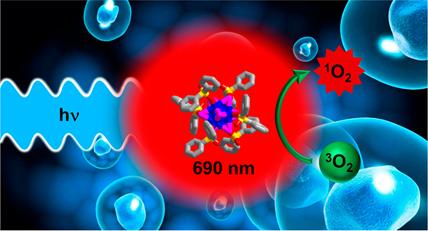
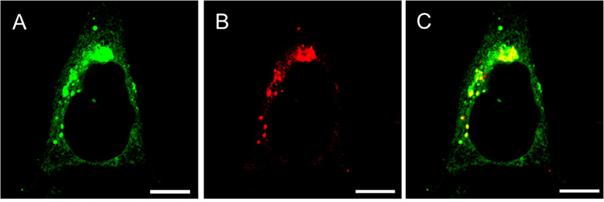

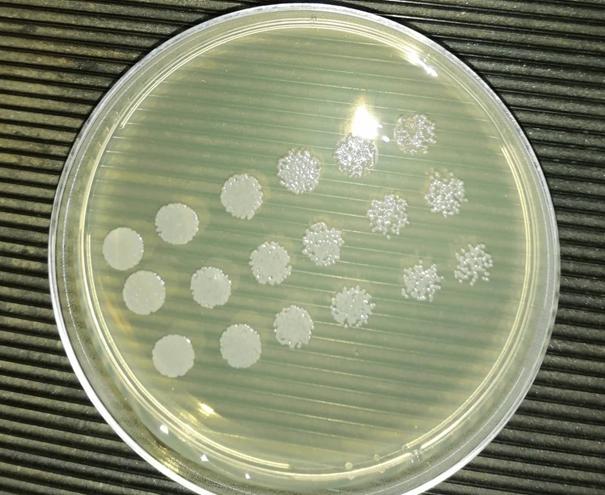
Funding
- Biomaterials based on octahedral molybdenum clusters as singlet oxygen radiosensitizers, GA18-05076S, Czech Science Fundation
Publications
- Kirakci K., Nguyen T.K.N., Grasset F., Uchikoshi T., Zelenka J., Kubát P., Ruml T., Lang K.: Electrophoretically Deposited Layers of Octahedral Molybdenum Cluster Complexes: A Promising Coating for Mitigation of Pathogenic Bacterial Biofilms under Blue Light. ACS Appl Mater Interfaces, 2020. IF 8,758
- Kirakci K., Demel J., Hynek J., Zelenka J., Rumlová M., Ruml T., Lang K..: Phosphinate Apical Ligands: A Route to a Water-Stable Octahedral Molybdenum Cluster Complex. Inorg Chem 58:16546–16552, 2019. IF 4,850
- Kirakci K., Zelenka J., Rumlová M., Cvačka J., Ruml T., Lang K.: Cationic octahedral molybdenum cluster complexes functionalized with mitochondria-targeting ligands: photodynamic anticancer and antibacterial activities. Biomater Sci 7:1386-1392, 2019. IF 5,831
- Kirakci K., Zelenka J., Rumlová M., Martinčík J., Nikl M., Ruml T., Lang K.: Octahedral molybdenum clusters as radiosensitizers for X-ray induced photodynamic therapy. J Mater Chem B 6:4301-4307, 2018. IF 5,047
- Hynek J., Zelenka J., Rathouský J., Kubát P., Ruml T., Demel J., Lang K.: Designing Porphyrinic Covalent Organic Frameworks for the Photodynamic Inactivation of Bacteria. ACS Appl Mater Interfaces 10:8527-8535, 2018. IF 8,456
- Buzek D., Zelenka J., Ulbrich P., Ruml T., Krizova I., Lang J., Kubat P., Demel J., Kirakci K., Lang K.: Nanoscaled porphyrinic metal-organic frameworks: photosensitizer delivery systems for photodynamic therapy. J Mater Chem B 5:1815-1821, 2017. IF 5,047
head of the group:
associate professors:
doc. Ing. Jaroslav Zelenka, Ph.D.
assistant professors:
Ing. Markéta Častorálová, PhD.
Ing. Eva Jablonská, Ph.D.
Ing. Vladimíra Pavlíčková, Ph.D.
Ing. Nikola Vrzáčková, Ph.D.
Ing. Bára Křížkovská
Ing. Lucie Hodboďová
Ing. Zdeněk Míchal
technician:
[iduzel] => 56537 [canonical_url] => [skupina_www] => Array ( ) [url] => [sablona] => stdClass Object ( [class] => infobox [html] => [css] => [js] => [autonomni] => 0 ) ) ) [iduzel] => 56536 [canonical_url] => [skupina_www] => Array ( ) [url] => /research/research-groups/molvirol [sablona] => stdClass Object ( [class] => stranka [html] => [css] => [js] => [autonomni] => 1 ) ) [55936] => stdClass Object ( [nazev] => Laboratory of Plant Biochemistry [seo_title] => Laboratory of Plant Biochemistry [seo_desc] => [autor] => [autor_email] => [obsah] =>Home Projects Publications
Plants as sesile organisms are exposed to many adverse environmental effects, either abiotic such as high temperature, drought, osmotic stress, salinity or biotic caused by pathogenic microorganisms, herbivores etc. Plants can adapt to many of these external cues as they evolved complex mechanisms by which they are capable to respond to unfavorable conditions.

Our laboratory is interested in topics related to the response of plants to various stress factors, focusing primarily on the role of various proteins in stress responses. We are studying plant stress response taking place both at the level of the whole plant and at the level of the cell.

As a model organism, we use Arabidopsis thaliana and oilseed rape (Brassica napus). We use modern biochemical, microscopic and molecular biological techniques to solve our projects.
Collaboration
- Institute of Experimental Botany of the Czech Academy of Sciences: Institute of Experimental Botany of the Czech Academy of Sciences (doc. Ing. Lenkou Burketová, CSc.)
- Institute of Experimental Botany of the Czech Academy of Sciences: Laboratory of Signal Transduction ( RNDr. Jan Martinec, CSc.)
- Institute of Experimental Botany of the Czech Academy of Sciences: Laboratory of Hormonal Regulations in Plants (vedená RNDr. Janem Petráškem, Ph.D.)
- Department of Experimental Plant Biology, Faculty of Science, University of South Bohemia
- Dr. Eric Ruelland CNRS, Institut d’Ecologie et des Sciences de l’Environnement de Paris, UMR 7618, Créteil, FRANCE; Université Paris-Est; UPEC, Institut d’Ecologie et des Sciences de l’Environnement de Paris, Créteil, FRANCE
Home Projects Publications
Plant immunity
In nature, plants are constantly confronted with an inexhaustible number of microorganisms, some of which may be beneficial others may not (pathogens). During evolution, plants have developed a very sophisticated immune system through which pathogens respond to attack. In our laboratory, we deal with various aspects of the study of plant immunity, both at the molecular level and by monitoring the manifestations of the whole plant during pathogen attack. The phytohormone salicylic acid (SA) plays an important role in plant immunity, which is at the heart of our research related to immunity. In addition to involvement in plant immune responses, SA is involved in many physiological processes such as seed germination, cell growth, vent closure, senescence, or fruit yield. We are currently working on a project studying how the biosynthesis of SA is regulated by the enzyme phosphatidylinositol-4-kinase and we are also monitoring the effect of actin cytoskeleton dynamics on the SA signaling pathway.
Understanding the molecular mechanisms associated with SA is also important from a practical point of view and may help to grow crops under stress in the future.
In addition to the involvement of SA in plant immunity, we deal with the involvement of SPFH proteins, which include proteins from the flotillin families and HIR proteins. Flotillins are very likely to participate in clathrin-independent endocytosis and are part of lipid microdomains. These properties could predetermine an important role in plant signaling in pathogen infestation.
This reasearch was supported by Czech Science Fundation:
- GA14-09685S - Flotillin: a novel player in plant stress signalling
- GA17-05151S - Phospholipid metabolizing enzymes as new components of salicylic acid signalling pathway
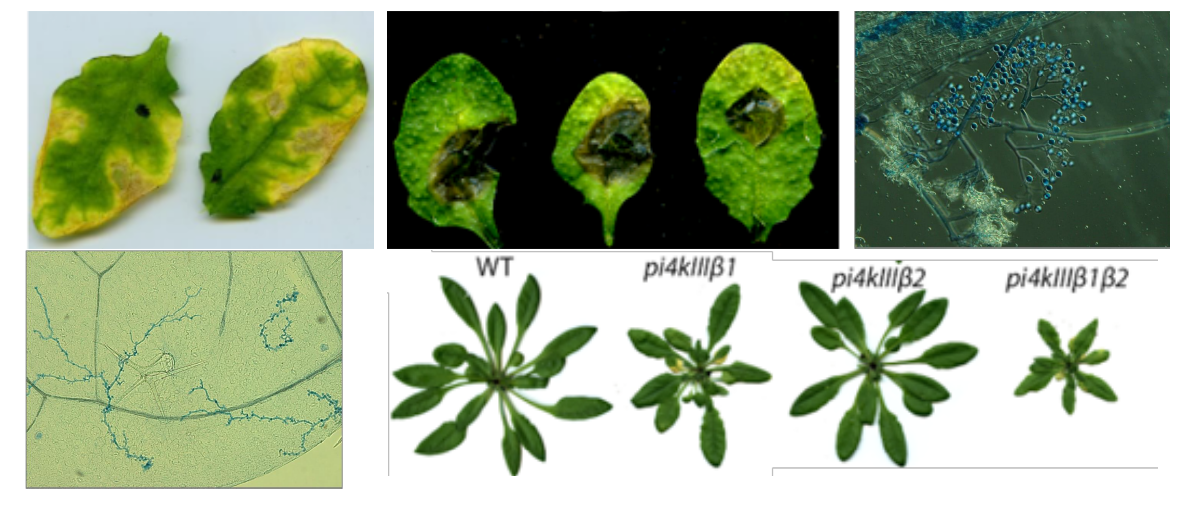
Plant responses to abiotic stress factors
Salt stress is currently a problem in many growing areas. Salt as an abiotic stress factor negatively affects the growth of plants and thus their productivity. Plants resist and respond to salt stress in many ways. One of the enzymes involved in defense mechanisms is phospholipase D (PLD).
In the study of the function of individual isoforms of phospholipase D in the response of plants to salt stress, we deal mainly with phospholipase Dα and phospholipase Dδ. As plant material we use wild type Arabidopsis thaliana and mutant lines A. thaliana with silenced genes encoding individual isoforms of PLD ( T-DNA insertion pldα mutant and pldδ of Arabidopsis thaliana). We monitor changes in the root system and evaluate phenotypic manifestations in wild-type and T-DNA insertion pld mutants of Arabidopsis thaliana.
In our work, we also focus on the description of intracellular molecular mechanisms involved in these changes.
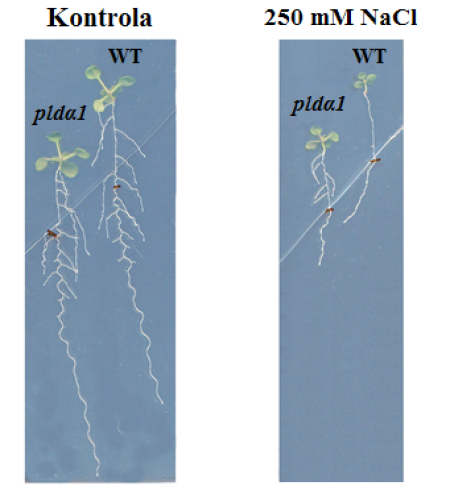
LIVE imaging and its use in the study of defense reactions at the cell level
Any response of a plant to a stress stimulus always begins at the molecular level - by changes in the function and composition of proteins and enzymes. These molecules then gradually affect the higher systems - organelles of cells, tissues, organs and finally the changes (in the optimal case) are reflected at the level of the whole plant as an adaptation to stress. Live imaging allows you to monitor changes in protein complexes and cellular organelles in real time, in response to stress stimuli.
The studied proteins are membrane phospholipases, flotillins and other members of this family - HIR proteins. Our goal is to elucidate their interaction and their interaction with the cytoskeleton in the response of cells to environmental stresses. We study both biotic stressors and currently pay great attention to nanoparticles and their effect on the cell and cell organelles, as well as the reactions of plant organs.
We use fluorescence, confocal and superresolution microscopy to study these processes, and part of the research is also the preparation of genetically modified plants and cells labeled with fluorescent protein. In plants and cells prepared in this way, we can monitor the dynamics of proteins and organelles and their interactions after stress stimuli in vivo.
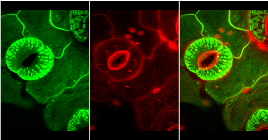
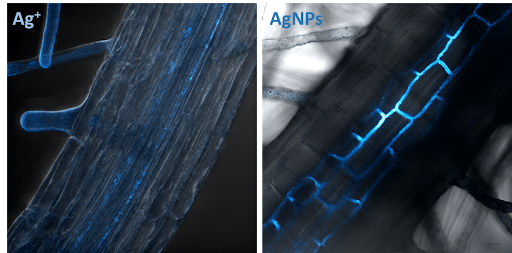
The maximum projection from 13 images shows the deposition of the defensive callose polysaccharide in the conductive pathways of the root of A. thaliana seedling treated with silver ions.
The second image represents one optical plane with the deposition of a callose in the endodermis of the root after treatment with silver nanoparticles. Both images show a combination of a fluorescent-blue callose signal and a cell structure visualized by differential interference contrast. Scale = 10 μm.
This reasearch was supported by Czech Science Fundation:
- GA14-09685S - Flotillin: a novel player in plant stress signalling
- GA17-10907S - Environmental impact of noble metal nanoparticles
Home Projects Publications
Identification of salicylic acid-independent responses in an Arabidopsis phosphatidylinositol 4-kinase beta double mutant. Annals of Botany 2020, 125(5), 775-784.
Characterisation of Arabidopsis flotillins in response to stresses . Biologia Plantarum 2019, 63, 144-152.
Interplay between phosphoinositides and actin cytoskeleton in the regulation of immunity related responses in Arabidopsis thaliana seedlings . Environmental and Experimental Botany 2019, 167, 103867.
Cell wall contributes to the stability of plasma membrane nanodomain organization of Arabidopsis thaliana FLOTILLIN2 and HYPERSENSITIVE INDUCED REACTION1 proteins . Plant J 2019, 20(24), 6365.
"Salicylic Acid Mutant Collection" as a Tool to Explore the Role of Salicylic Acid in Regulation of Plant Growth under a Changing Environment . Int J Mol Sci 2019, 101(3), 619-636.
Actin depolymerization is able to increase plant resistance against pathogens via activation of salicylic acid signalling pathway. Sci Rep 2019, 9(1),1-10.
Mapping of Plasma Membrane Proteins Interacting With Arabidopsis thaliana Flotillin 2. Front Plant Sci 2018, 9, 991.
Krčková Z., Kocourková D., Daněk M., Brouzdová J., Pejchar P., Janda M., Pokotylo I., Ott P., Valentová O., Martinec J.: The Arabidopsis thaliana non-specific phospholipase C2 is involved in the response to Pseudomonas syringae attack. Ann Bot 2018, 121 (2), 297-310.
Krutinová H, Trdá L, Kalachová T, Lamparová L, Pospíchalová R, Dobrev P, Malinská K, Burketová L, Valentová O, Janda M: Can Actin Depolymerization Actually Result In Increased Plant Resistance To Pathogens?. bioRxiv 2018, 278986.
Angelini J,Vosolsobě S, Skůpa P, Yeuan Yen Ho A. Bellinvia E, Valentová O, Marc J: Phospholipase Dδ assists to cortical microtubule recovery after salt stress. Protoplasma 2018, 255(4), 1195-1204.
Bio-based resistance inducers for sustainable plant protection against pathogens. Biotechnol Adv 2015, 33(6/2), 994-1004.
: Constitutive salicylic acid accumulation in pi4kIIIbeta1beta2 Arabidopsis plants stunts rosette but not root growth. New Phytol 2014, 203(3), 805-816.
: Changes in actin dynamics are involved in salicylic acid signaling pathway. Plant Sci 2014, 223, 36-44.
: Cell Wall Components of Leptosphaeria maculans Enhance Resistance of Brassica napus. J Agric Food Chem 2013, 61(22), 5207–5214.
Janda M, Planchais S, Djafi N, Martinec J, Burketova L, Valentova O, Zachowski A, Ruelland E: Phosphoglycerolipids are master players in plant hormone signal transduction. Plant Cell Rep 2013, 32(6), 839-851.
: Loss of membrane fluidity and endocytosis inhibition are involved in rapid aluminum-induced root growth cessation in Arabidopsis thaliana. Plant Physiol Biochem 2012, 60(), 88-97.
: beta-Aminobutyric acid protects Brassica napus plants from infection by Leptosphaeria maculans. Resistance induction or a direct antifungal effect? Eur J Plant Pathol 2012, 133(1), 279-289.
: Role of hydrogen peroxide and antioxidant enzymes in the interaction between a hemibiotrophic fungal pathogen, Leptosphaeria maculans, and oilseed rape. Environ Exp Bot 2011, 72(2), 149-156.
: The phosphatidylcholine-hydrolysing phospholipase C NPC4 plays a role in response of Arabidopsis roots to salt stress. J Exp Bot 2011, 62(11), 3753-3763.
Mutual regulation of plant phospholipase D and the acetin cytoskeleton. Plant J 2010, 62, 494-507.
[urlnadstranka] => [ogobrazek] => [pozadi] => [iduzel] => 56453 [canonical_url] => [skupina_www] => Array ( ) [url] => /research/research-groups/plants/56453 [sablona] => stdClass Object ( [class] => stranka [html] => [css] => [js] => [autonomni] => 1 ) ) [56451] => stdClass Object ( [nazev] => [barva_pozadi] => seda [uslideru] => false [text] =>head of the group
prof. RNDr. Olga Valentová, CSc.
associate professors
doc. Ing. Lenka Burketová, CSc.
assistant professors
PharmDr. Jindřiška Angelini, Ph.D.
PhD students
[iduzel] => 56451 [canonical_url] => [skupina_www] => Array ( ) [url] => [sablona] => stdClass Object ( [class] => infobox [html] => [css] => [js] => [autonomni] => 0 ) ) ) [iduzel] => 55936 [canonical_url] => [skupina_www] => Array ( ) [url] => /research/research-groups/plants [sablona] => stdClass Object ( [class] => stranka [html] => [css] => [js] => [autonomni] => 1 ) ) [50497] => stdClass Object ( [nazev] => Laboratory of Proteins with Biotechnological Potential [seo_title] => Laboratory of Proteins with Biotechnological Potential [seo_desc] => [autor] => [autor_email] => [obsah] =>Home Projects Publications
Proteins play an important role in the living world. Their diversity is huge and fascinating. In our laboratory we study proteins in a complex manner. We are mainly interested in the relationship between the structure and catalytic activity of enzymes, looking for new proteins with interesting properties, optimizing the production of recombinant proteins and developing new molecular modeling methods to simulate slow and computationally demanding processes such as protein folding or interactions of protein with ligands.
Current projets
Cold-active enzymes
Enzymes from organisms living in permanently cold environments (e.g. mountain and polar regions) have significantly higher activity at low temperatures compared to enzymes from meso- and thermophilic sources. This property makes them interesting biocatalysts for low temperature applications. In our group we study cold-active enzymes (specifically chitinase, amylase, cellulase, β-galactosidase), which have a potential for use in the paper, food or pharmaceutical industries.
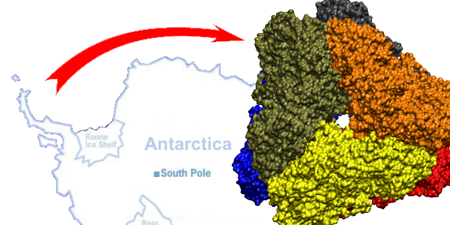
Enzymes with therapeutical potential
Asparaginases have found application in medicine in the treatment of acute myeloid leukemia. It uses their natural ability to cleave L-asparagine, which is depleted in tumor cells, as a result of which protein biosynthesis is stopped and apoptosis occurs. Healthy cells are able to synthesize L-asparagine due to the presence of L-asparagine synthetase and are therefore not affected by this type of treatment. Preparations containing recombinant L-asparaginase from E. coli and Dickeya dadantii are currently used in practice, however, the application of both enzymes has a number of complications, and therefore it is necessary to look for other sources of L-asparaginase with more suitable properties for clinical applications.
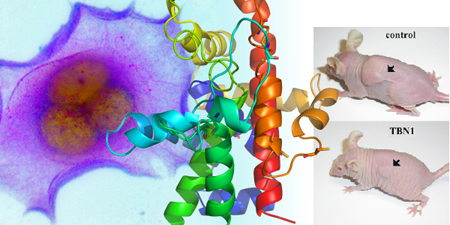
Nucleases have been studied for a long time because of their anti-tumor effects. So far, the main focus has been on animal nuclases. However, in our group we are focusing on enzymes from other sources, such as plants or bacteria. These enzymes are studied using molecular biology and protein engineering methods. Biological studies and crystallographic experiments are carried out in cooperation with the Institute of Plant Molecular Biology, the Institute of Physiology and Animal Genetics and the Biotechnology and Biomedical Center of the Academy of Sciences and Charles University in Vestec (BIOCEV).
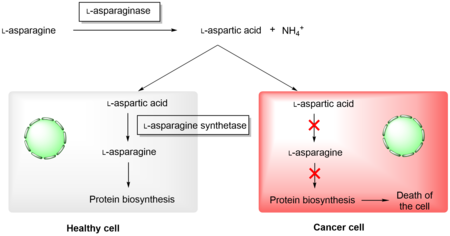
Structural protein of lipid droplets
We are interested in cellular lipid droplets and their life cycle, with special emphasis on the characterization of proteins associated with lipid droplets permanently or within a specific stage of the life cycle. Our goal is to contribute to the description of the life cycle of these specialized organelles and thus to the biotechnological use of both lipid droplets themselves (lipid and biofuel production, oil degradation, drug transport and immobilization systems) and their associated proteins (fusion anchors for industrial recombinant protein expression). As a model organisms we use both prokaryotic (marine bacteria Alcanivorax borkumensis capable to break down oil) and eukaryotic (plant Arabidopsis thaliana and yeast Saccharomyces cerevisiae) organisms.
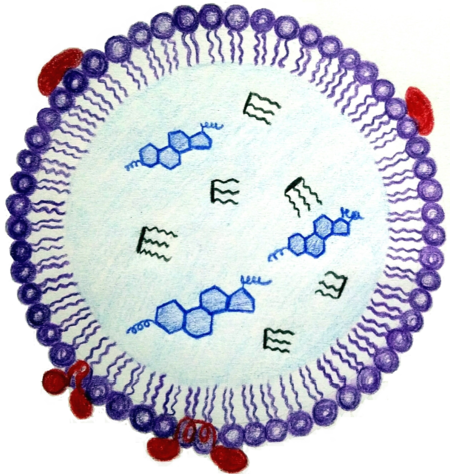
Proteins involved in the synthesis of ladderans in anammox bacteria
So far not well-known anammox bacteria (from the English anaerobic ammonium oxidation) were discovered in the mid-1980s and seem to play an important role in the nitrogen cycle on Earth. Anammox bacteria directly use ammonia as a source of energy, which they convert into molecular nitrogen . They do not need oxygen and, instead of producing carbon dioxide, they consume it. for this purpose they contain an organelle called the anammoxosome, in which energy metabolism is located. The membrane of the anammoxosome is composed of very interesting phospholipids, which have very specific lipids attached – ladderans. During the processing of ammonia in the anammoxosome, a highly reactive and toxic hydrazine is formed as an intermediate, which is just held inside the organelle by ladderans, which, unlike common fatty acids, give the membrane lower permeability to various substances. The biosynthesis of ladderans has not yet been elucidated and is the subject of our research.
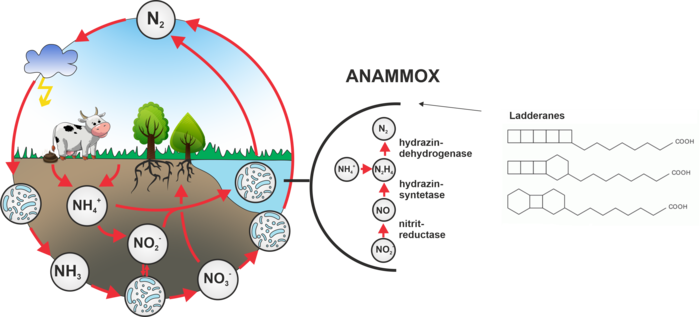
Molecular modelling
Computer simulations make it possible to study complex dynamic behavior of proteins, saccharides, other biomolecules and their assemblies. The main drawback of molecular simulations is their high computational cost. To study procesess that take place in long time scales it is necessary to apply special simulation methods. We use and metadynamics and other methods and we endeavour to contribute to their development, for example by application of artificial neural networks.
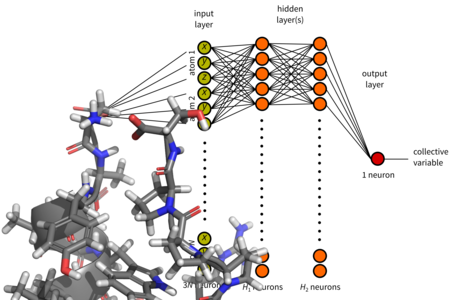
head of the group:
doc. Ing. Vojtěch Spiwok, Ph.D.
associate professors:
doc. Ing. Petra Lipovová, Ph.D.
assistant professors:
PhD students:
technicians:
[iduzel] => 55935 [canonical_url] => [skupina_www] => Array ( ) [url] => [sablona] => stdClass Object ( [class] => infobox [html] => [css] => [js] => [autonomni] => 0 ) ) ) [iduzel] => 50497 [canonical_url] => [skupina_www] => Array ( ) [url] => /research/research-groups/protbiotech [sablona] => stdClass Object ( [class] => stranka [html] => [css] => [js] => [autonomni] => 1 ) ) ) [sablona] => stdClass Object ( [class] => stranka_submenu [html] => [css] => [js] => [autonomni] => 1 ) [api_suffix] => )